
About UsThe Numismatic Bibliomania Society is a non-profit organization devoted to the study and enjoyment of numismatic literature. For more information please see our web site at coinbooks.org SubscriptionsThose wishing to become new E-Sylum subscribers (or wishing to Unsubscribe) can go to the following web page link MembershipThere is a membership application available on the web site Membership Application To join, print the application and return it with your check to the address printed on the application. Membership is only $20 to addresses in the U.S., $25 for First Class mail, and $30 elsewhere. For those without web access, write to: Terry White, Treasurer
AsylumFor Asylum mailing address changes and other membership questions, contact Terry at this email address: terrywhite5475@yahoo.com SubmissionsTo submit items for publication in The E-Sylum, just Reply to this message, or write to the Editor at this address: whomren@gmail.com BUY THE BOOK BEFORE THE COINSale Calendar |
- WAYNE'S WORDS: THE E-SYLUM MARCH 27, 2016
- KOLBE & FANNING MARCH 2016 FIXED PRICE LIST PUBLISHED
- SO-CALLED DOLLARS IN THE RED BOOK
- NEW BOOK: THE RISE OF THE DOLLAR
- NEW BOOK: IRRITAMENTA: NUMISMATIC TREASURES OF A RENAISSANCE COLLECTOR
- NEW BOOK: AMERICAN JOURNAL OF NUMISMATICS VOL. 27
- BOOK REVIEW: WATERCRAFT ON WORLD COINS, VOLUME III
- SYDNEY NOE’S COIN HOARDS PUBLISHED ELECTRONICALLY
- NEWMAN PORTAL SCANS PRESIDENTIAL AUCTION CATALOGS
- NOTES FROM E-SYLUM READERS: MARCH 27, 2016
- ON UNDER-RESEARCHED AREAS OF NUMISMATICS
- NUMISMATIC ORIGIN STORIES
- JOSEPH FARRAN ZERBE (1871-1949)
- THE HIGH RELIEF LIBERTY SERIES
- U.S. MINT REAPPOINTS SCARINCI AND MORAN TO CCAC
- SCARINCI ON THE BOYS TOWN COMMEMORATIVE COIN DESIGNS
- NATIONAL PARK SERVICE COIN LAUNCH EVENT PHOTOS
- THE 29TH MINT DIRECTORS CONFERENCE
- A SEAL COMMISSIONED BY ROBERT THE BRUCE
- THE 2016 ROYAL MAUNDY CEREMONY
- COINS OF THE ROYAL MAUNDY
- ORIGIN OF HOBO NICKELS AND EARLY NICKEL CARVERS
- LAND SCRIP
- SELECTIONS FROM HERITAGE NEWMAN INTERNET PART 1 SALE
- SELECTIONS FROM STACKS-BOWERS MARCH 2016 CURRENCY SLE
- ALEXANDER REPORTS ON 1794 DOLLAR LONDON EXHIBIT
- 2016 NATIONAL SILVER DOLLAR ROUNDTABLE VIDEOS
- SOME RECENT COIN DESIGNS: MARCH 27, 2016
- FIRST GAY COIN DESIGN?
- HALF DOLLARS AND THE MACHTZIS HASHEKEL CUSTOM
- REPORT PREDICTS END OF CASH AS EARLY AS 2030
- VENEZUELA ORDERS BANKNOTES BY THE PLANELOAD
- COIN COLLECTING CONUNDRUM SUGGESTIONS
- HIDDEN BENEFIT OF A LARGE LIBRARY
- FEATURED WEB SITE: ART NOUVEAU AND ART DECO MEDALS
Click here to access the complete archive
To comment or submit articles, reply to whomren@gmail.com
WAYNE'S WORDS: THE E-SYLUM MARCH 27, 2016
New subscribers this week include: Alvin Stern, courtesy of John and Nancy Wilson, and Jeff Garrett, courtesy of Tom Uram. Welcome aboard! We now have 1,959 subscribers.
This week we open with a new fixed price list from Kolbe & Fanning, a note about So-Called Dollars in the new Mega Red, three new books and one review.
Other topics this week include the latest addition to the Newman Numismatic Portal, reader numismatic origin stories, Farran Zerbe, the U.S. Mint high-relief gold coins, the Royal Maundy coinage, land scrip, and banknotes by the planeload.
To learn more about Medicina in Nummis, the Rise of the Dollar, watercraft on world coins, the Red Book on the comic page, Karl Moulton's 1817 large cent, Ken Spindler's 1835 dime, the Mint Directors Conference, numisnautica, "Peanut Ear", and "Portuguese Joe", read on. Have a great week, everyone!
Wayne Homren
Editor, The E-Sylum
KOLBE & FANNING MARCH 2016 FIXED PRICE LIST PUBLISHED
Kolbe & Fanning are pleased to announce the availability of their latest catalogue, the second in a series of fixed-price offerings of rare and out-of-print numismatic books from around the world. Featuring works on ancient, medieval and modern topics, the 36-lot PDF catalogue aims to include a wide variety of material. To download the catalogue, visit our website at numislit.com.
A few highlights from this March offering include:
Max von Bahrfeldt’s rare 1929 memorial volume Ernst Justus Haeberlin: sein Wirken in Wissenschaft und Leben, featuring biographical and bibliographical material on Haeberlin as well as various works by him.
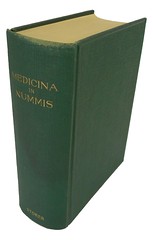 Horatio Robinson Storer’s massive 1931 Medicina in Nummis: A Descriptive List of the Coins, Medals, Jetons Relating to Medicine, Surgery
and the Allied Sciences.
Horatio Robinson Storer’s massive 1931 Medicina in Nummis: A Descriptive List of the Coins, Medals, Jetons Relating to Medicine, Surgery
and the Allied Sciences.
Barber, John Warner Barber’s 1841 History and Antiquities of New England, New York, and New Jersey, featuring very early depictions of the state coinage of New Jersey, Connecticut and Massachusetts.
The catalogue is being published only in PDF form. No printed catalogue will be issued. It is being distributed first to those customers of ours who have signed up for our email list. You can sign up for our mailing list on our website at numislit.com. Kolbe & Fanning hope to issue similar fixed-price PDF catalogues throughout the upcoming year, so make sure you are among the first to know of them: most items offered are one of a kind.
Please email Kolbe & Fanning at orders@numislit.com or call our office at (614) 414-0855 to purchase lots. We look forward to hearing from you.
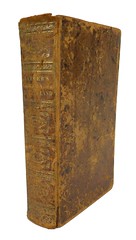
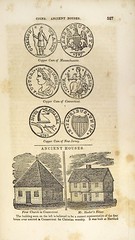
Barber’s 1841 History and Antiquities of New England, New York, and New Jersey
THE BOOK BAZARRE
SO-CALLED DOLLARS IN THE RED BOOK
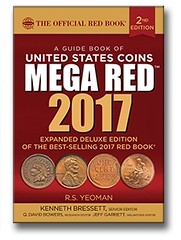 As Dick Johnson mentioned several weeks ago, So-Called Dollars will be showcased in the Deluxe Edition “MEGA RED” Book due out in a few
weeks. This is exciting news not only for So-Called Dollar Collectors, but for the entire hobby as well because this will give exposure and educate
collectors on a historically significant and diverse segment of our hobby.
As Dick Johnson mentioned several weeks ago, So-Called Dollars will be showcased in the Deluxe Edition “MEGA RED” Book due out in a few
weeks. This is exciting news not only for So-Called Dollar Collectors, but for the entire hobby as well because this will give exposure and educate
collectors on a historically significant and diverse segment of our hobby.
Dennis Tucker, publisher for Whitman and the Red Book said “Medals are a longtime pursuit of mine. I’ve studied them almost as long as I’ve been interested in coins. They make up a good portion of my overall collection, and these days they’re the main focus of my active collecting. This year’s MEGA RED includes a brand-new 18-page appendix on So-called Dollars. This is richly illustrated with more than 120 full-color images, with text by specialist Jeff Shevlin. It provides a history of So-Called Dollars, advice on collecting them, a study of rarity, and discussion of today’s market”.
According to Kenneth Bressett, editor for the Red Book “The growing interest in medal collecting has prompted the publishers of Whitman’s Guide Book of United States Coins to acknowledge the important role medals have for today’s collector community, and to include examples of these important historical documents as part of the total story of American numismatics and its many facets. It is hoped that this introduction to the world of medal collecting may be an inspiration to any who have overlooked them in the past.”

1869 GRANT TRANSCONTINENTAL RAILWAY COMPLETION
Dies engraved by William Barber
The completion of the first transcontinental railroad was a major technological accomplishment. Only 20 years after the gold rush there was now an economic way to transport people and goods from coast to coast. Dies made by William Barber and struck at the Philadelphia Mint.

As Kenneth Bressett said “It is always refreshing to observe the enthusiasm shown by medal collectors for their favorite segment of numismatics. They view the artistry, history and significance of each piece as its prime importance in a way that is too often overlooked by those who simply collect coins with the objective of completeness or concern for condition.”
For more information, or to order, see:
www.whitman.com
To read the earlier E-Sylum article, see:
SO-CALLED DOLLARS COMING TO DELUXE RED BOOK
(www.coinbooks.org/esylum_v19n08a07.html)
NEW BOOK: THE RISE OF THE DOLLAR
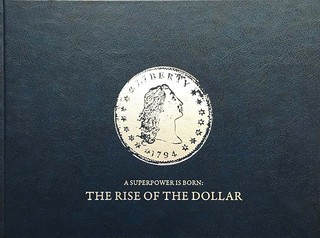
The ANS has received 14 copies of the new book, A Superpower is Born: The Rise of the Dollar. Published in 2016, this 80-page, full-color book features seven articles on United States silver dollars, including two chapters by Matthew Wittmann, recently the ANS’s Assistant Curator of American Coins and Currency. Other authors include Ole Bjørn Fausa, Brian Hendelson, Svein Gullbekk, Michael Märcher, and Jesse Kraft. Published by Samlerhuset Group B.V., edited by Prof. Svein H. Gullbekk of the University of Oslo. ISBN 978-82-999453-2-5.
Purchase price is $25 for Members and non-Members, plus $10 shipping/handling. Contact Andrew Reinhard, ANS Director of Publications to order.
To contact Andrew Reinhard, email him at:
areinhard@numismatics.org

NEW BOOK: IRRITAMENTA: NUMISMATIC TREASURES OF A RENAISSANCE COLLECTOR
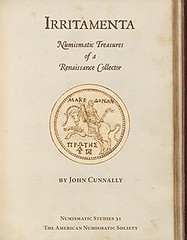 Irritamenta: Numismatic Treasures of a Renaissance Collector
Irritamenta: Numismatic Treasures of a Renaissance Collector
(Numismatic Studies Volume 31)
by John Cunnally
Pre-Order price: $125 plus shipping & handling, until May 1, 2016
List price: $200 plus shipping & handling
Member price: $140 plus shipping & handling
ISSN 0517-404-x
ISBN 978-0-89722-342-3
Hardcover, slipcased 2-vol. set, 414 text pages with b/w figures, 330 color plates
Handsomely bound in red leather, MS Typ 411 is one of thousands of rare editions, manuscripts, and documents in the Houghton Library’s Printing and Graphic Arts section at Harvard University. Resembling an old fashioned family Bible at 10 × 8 inches and some 300 pages, when opened this book reveals no text but a series of fine pen-and-ink drawings, 1,220 illustrations of ancient coins. These are the records of a coin collection owned by Andrea Loredan, a Venetian patrician well known in the 1550s and ‘60s as a passionate connoisseur of antiquities. Silver tetradrachms of Athens and Alexander the Great, aurei of Philip and Augustus, denarii of Caesar and his assassins, large Imperial sestertii of Nero and Hadrian, the numismatic images were intended to delight the eye, stir the curiosity, and enflame the acquisitive instincts of prospective buyers, at a time when the cash-strapped patrician was seeking to liquidate the ancient treasures of his private museum.
The volume was, in essence, a sales catalogue, a species of book not often sought out and admired for artistic or literary merit. Yet Loredan and his unknown draftsman, unaware of how they were benefiting future scholars, produced a graphic masterpiece of elegance and charm, a document of the highest importance for the study of Renaissance antiquarianism, humanism, and archaeology.
The author first encountered MS Typ 411 while working on his survey of Renaissance numismatic literature, Images of the Illustrious: the manuscript is mentioned in a footnote by Ruth Mortimer in one of her catalogues of 16th century printed books at the Harvard Library. The drawings at that time were attributed to the Mantuan goldsmith and antiquary Jacopo Strada (ca. 1515–1588), one of the numismatic authors in whose career I was interested, and a prolific producer of albums depicting ancient coins. My own initial reaction on first examining MS Typ 411 in person was to doubt not only the attribution to Strada, but the 16th century date itself. Surely these careful drawings, so attentive to nuances of inscription and detail such as mint-marks and magistrates’ initials, were the product of a much later, more sophisticated period of numismatic research, no earlier than the time of Eckhel and Mionnet in the late 18th or early 19th century. Particularly “modern” it seemed to me was the draftsman’s practice of varying the size of the coin drawings to replicate the actual dimensions of the pieces, which vary from tiny fractional silver to large bronze medallions.
The usual routine in 16th century numismatic books was to show the coins as uniform in size, sometimes accompanied by a Greek letter keyed to a scale of concentric or nested circles printed at the front or back of the book. But the physical evidence of the watermarks and binding, as well as contemporary documents reporting the contents of Loredan’s collection and his creation of an album of drawings to help him sell it, quickly dispelled any skepticism, and we can safely assign the origin of the manuscript to Venice, and its date to around 1560.
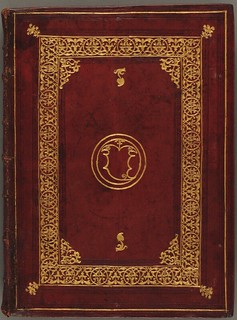
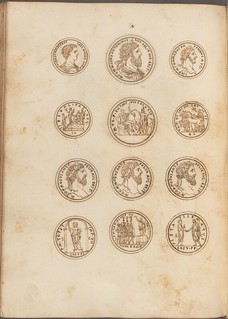
With this date and locale established, the significance of MS Typ 411 for students of Renaissance antiquarianism cannot be overstated. While written descriptions and even partial catalogues of some Renaissance coin collections have come down to us—for example, the Greek and Roman silver of Cardinal Pietro Barbo, the future Pope Paul II, inventoried in 1457, and the 800 gold coins owned by Duke Ercole II of Ferrara, recorded by his courtier Celio Calcagnini around 1540—the Houghton manuscript is unique in offering an album of pictures of a complete Renaissance collection. And whereas the written catalogues are often informative enough to allow us to identify the type of coin described in the text, in the Loredan manuscript the abundance of detail permits a modern numismatist to pinpoint an item more precisely to a particular issue, and sometimes to a particular die, based on subsidiary symbols and variations of the portrait that are overlooked in written descriptions.
In a few cases, such as that of Loredan’s tetradrachm of the First Region of Macedon bearing monograms of two magistrates, or a bronze of Bostra showing the head of Elagabalus, the unique markings or surviving letters displayed in the drawing can be matched with a high degree of probability to only a single coin existing in a modern collection. The importance of this information for numismatists interested in the provenance of the objects they study, and intrigued by evidence of rare coins known to earlier collectors but no longer extant, is obvious.
For art historians such as Cunnally who specialize in tracing the survival and revival of antiquity during the Renaissance, continually asking the “Watergate” questions—what did they know and when did they know it?—the Loredan manuscript is a precious witness to the abundance and variety of ancient numismatic material available to the artists, as well as their patrons and public, during that period. Art historians searching for the antique sources available to Titian, Palladio, Sansovino, and other Venetian masters of the Cinquecento should find the drawings of MS Typ 411 particularly interesting.
John Cunnally is an associate professor of Art and Visual Culture specializing in Renaissance art history at Iowa State University.
Pre-order Price: $125. until May 1, 2016
expected to ship in June 2016
For more information, or to order, see:
Irritamenta: Numismatic Treasures of a Renaissance Collector
(http://numismatics.org/Store/Irritamenta)
NEW BOOK: AMERICAN JOURNAL OF NUMISMATICS VOL. 27
American Journal of Numismatics 27 (2015)
Hardback, illus., 258 pp., 58 plates
List Price: $75 (plus shipping & handling)
Member Price: $52.50 (plus shipping & handling)
ISSN 0078-2781
ISBN 10:0-89722-343-8
ISBN 13:978-0-89722-343-0.
Andrew R. Meadows, Editor
Oliver D. Hoover, Managing Editor
From the March 2016 Enews:
The American Journal of Numismatics vol. 27 is now at the printer. All memberships, except Basic Associates, will receive this edition in the mail. The Gaza 1960s hoard, the Tralles Byzantine coin hoard, and a revision of Georgian-Sasanian coinage are three of the 13 articles in this volume from 21 authors, which also includes a book review. If you would like, you can pre-order this volume by contacting Andrew Reinhard, ANS Director of Publications at areinhard@numismatics.org.
Fernando López Sánchez and Daniel Gómez Castro. The Gaza 1960s Hoard: An Assemblage of Archaic Greek Coins
Kenneth Sheedy, Damian B. Gore, and Matthew Ponting. The Bronze Issues of the Athenian General Timotheus: Evaluating the Evidence of Polyaenus’s Stratagemata
Catharine C. Lorber. A Hoard of Tetradrachms of Alexander III and Philip III, November 2003
Lloyd W. Taylor. From Triparadeisos to Ipsos: Seleukos I Nikator’s Uncertain Mint 6A in Babylonia
Eric Carlen. The Final Phase Coinage of ΠΤΟΛΕΜΑΙΟΥ ΣΩΤΗΡΟΣ Tetradrachms Dated According to an Uncertain Era
Yoav Farhi. Cleopatra in Gaza(?): A Hitherto Unpublished Coin Type from Gaza and the First Year of Coinage in Gaza under Roman Rule
Craig A. Harvey. A Possible Hoard of Judaean and Nabataean Coins from Cyprus
Clive Stannard, Gisèle Gentric, Jean-Albert Chevillon, and Jean-Claude Richard Ralite. Coins of the Pompeian Pseudomint and of the Italo-Baetican Series from Southern France
Martin Beckmann. The Function of the Attribute of Liberalitas and its use in the Congiarium
Ceren Ünal “Tralleis Hoard” and the Reflection of the Iconoclastic Idea in Byzantine Coin Iconography
Irakli Paghava and George Janjgava. Revising Georgian-Sasanian Coinage: A New (Third) Type Drama of Gurgen
Aram Vardanyan. Seeking Political Compromise: The Dulafidd Governors of Jibāl and their Coinage
Konstantin Kravtsov and Olga Stepanova. An Ottoman Coin with the Countermarked Portrait of Carl XII from the Hermitage Collection
David Hendin. Review Article
For more infornmtion, or to order, see:
http://numismatics.org/Store/AJN27
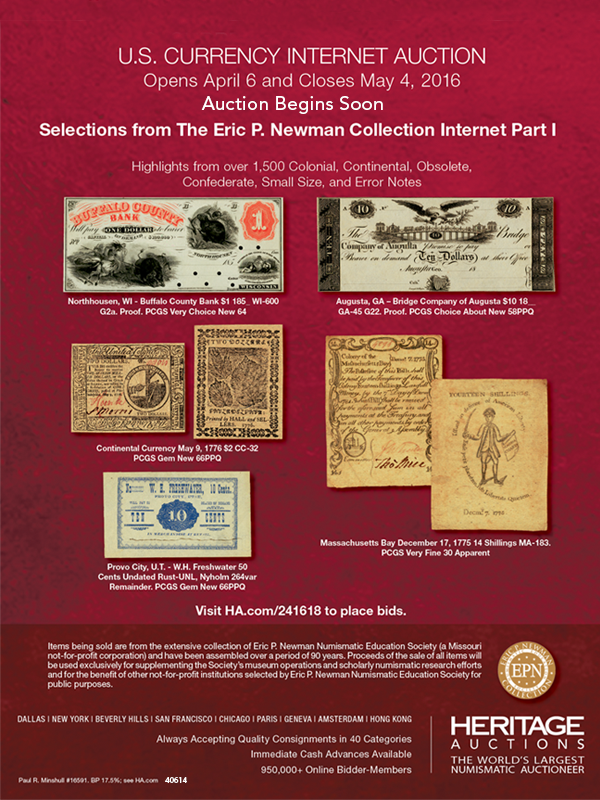
BOOK REVIEW: WATERCRAFT ON WORLD COINS, VOLUME III
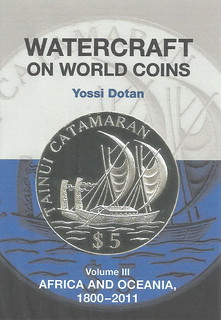 Author Yossi Dotan kindly sent me a copy of the latest volume in his series on ship coins. Watercraft on World Coins Volume III: Africa
and Oceana 1800-2011 was published last year by The Alpha Press. Volume I came out in 2007, covering Europe. Volume II came out in 2010, covering
America and Asia.
Author Yossi Dotan kindly sent me a copy of the latest volume in his series on ship coins. Watercraft on World Coins Volume III: Africa
and Oceana 1800-2011 was published last year by The Alpha Press. Volume I came out in 2007, covering Europe. Volume II came out in 2010, covering
America and Asia.
Ship coins are one of the most widely collected themes in numismatics. These volumes are a great service to the hobby and an excellent model for researchers in other topical areas.
The format is thankfully identical to those of the first two volumes, making for a well-matched set on the shelf. I have yet to come across a topical numismatic book that does a better job of organizing and presenting its subject. Entries are of varying length, and clearly well-researched and written. Most entries are illustrated with a black and white image of the coin, with the actual diameter noted.
In the book's press release author Dotan noted:
Finding all such information has been a challenge, even in this age of Internet, text and image search machines, and translation tools. Information found in press releases by the central banks and mints that market the coins, or in numismatic periodicals in English, German, and Dutch, is limited and had to be supplemented by research in specialized libraries, creative thinking, and assistance by persons in countries far away, such as a ship coin collector in Russia or a ship stamp collector in New Zealand.
As with the first two volumes, volume III passes my back-of-the-book test with a six-page index, select bibliography and seven pages of additions and corrections to the previous volumes.
Collectors worldwide will find something of interest in the volume even if they don't specialize in the topic. Countries around the world have issued coins honoring ships of other nations; for example, U.S. Civil War buffs may be interested in the 2000 Liberian $20 coin featuring the "Battle of the Ironclads" between the Monitor and Merrimack.
Some coin designs that caught my eye included a 1999 Cook Islands $5 coin featuring the PS Sophia Jane (p239), the 1935 Fiji Shilling featuring an outrigger canoe (p283), and an interesting Palau piece on the 400th anniversary of the telescope (the inventor is shown peering at a distant ship).
Congratulations to Yossi Dotan for completing this massive project. He writes:
While I have researched ship coins for forty years, writing of the book began when I retired at the age of 65. Now at the age of 81 I feel very fortunate to have been able to bring this work to fruition and I am happy to share the results of my research with fellow numisnautists and other interested collectors.
The book is published in England by The Alpha Press. Volume III has 460 pages and 770 coin images. The list price is $79.95 and the ISBN 978-1-898595-51-9.
For more information, or to order, see:
Watercraft on World Coins
(www.sussex-academic.com/sa/titles/alpha_press/dotan.htm)
To read the earlier E-Sylum articles, see:
REVIEW: WATERCRAFT ON WORLD COINS, VOLUME I BY YOSSI DOTAN
(www.coinbooks.org/esylum_v10n45a05.html)
BOOK REVIEW: DOTAN, WATERCRAFT ON WORLD COINS VOLUME II
(www.coinbooks.org/esylum_v13n38a06.html)
NEW BOOK: WATERCRAFT ON WORLD COINS, VOL. III
(www.coinbooks.org/esylum_v18n45a03.html)

SYDNEY NOE’S COIN HOARDS PUBLISHED ELECTRONICALLY
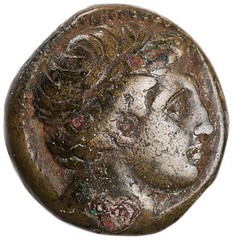 The first Ebook has been published to the ANS Digital Library, as part of the NEH/Mellon Humanities Open Book Program. Sydney Noe’s
Coin Hoards is available to read in a browser or to download as an EPUB file for an EReader app. Through Linked Open Data
methodologies, references to coins in our collection, hoards, or people, places, and things defined on Nomisma.org, Wikipedia, or other
systems allow us to integrate this Ebook into other aspects of our digital collections.
The first Ebook has been published to the ANS Digital Library, as part of the NEH/Mellon Humanities Open Book Program. Sydney Noe’s
Coin Hoards is available to read in a browser or to download as an EPUB file for an EReader app. Through Linked Open Data
methodologies, references to coins in our collection, hoards, or people, places, and things defined on Nomisma.org, Wikipedia, or other
systems allow us to integrate this Ebook into other aspects of our digital collections.
For example, IGCH 1508 contains bibliographic references to Noe’s section on the "Saida Find" in Coin Hoards, and a mention of this hoard in one of Edward Newell’s research notebooks in our archives. Similarly, MANTIS’s functionality has been extended to draw annotations from our digital library and archives, e.g., 1944.100.12601, which was listed on a specific page in one of Newell's notebooks.
These advances are part of a broader effort to build a sophisticated and interlinked numismatic research system. Ethan Gruber, ANS Director of Data Science, will soon present at the Computer Applications in Archaeology conference in Oslo on this infrastructure topic.
To read Coin Hoards online, see:
http://numismatics.org/digitallibrary/ark:/53695/nnan146115
NEWMAN PORTAL SCANS PRESIDENTIAL AUCTION CATALOGS
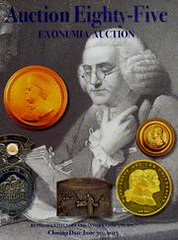 The Newman Numismatic Portal (NNP), with the kind permission of Joe Levine, has scanned the entire run of Presidential Coin & Antique
Company (PCAC) sale catalogs. Dating back to 1969 and currently numbering 85 sales, the PCAC series offers a superb array of exonumia, expertly
catalogued and engagingly presented.
The Newman Numismatic Portal (NNP), with the kind permission of Joe Levine, has scanned the entire run of Presidential Coin & Antique
Company (PCAC) sale catalogs. Dating back to 1969 and currently numbering 85 sales, the PCAC series offers a superb array of exonumia, expertly
catalogued and engagingly presented.
The first sale in 1969 modestly announced “the first of a series of mail bid auctions I plan to conduct,” and the extensive list of Civil War tokens served as the beginning of even greater things to come. The series in total numbers over 8,000 pages. The Newman Portal acknowledges David Schenkman and Bob Julian for loaning copies of the PCAC catalogs for scanning.
To view PCAC catalogs on NNP, see:
www.newmanportal.org/library/auctioncompanydetail/511514
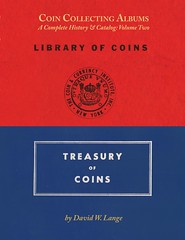
Pre-Publication Offer Until May 1, 2016
Coin Collecting Albums
A Complete History & Catalog: Volume Two
$45 plus $10 for priority shipping
David W. Lange, POB 110022, Lakewood Ranch, FL 34211, langedw@msn.com
NOTES FROM E-SYLUM READERS: MARCH 27, 2016
March 30, 2016 Rick Bagg Perkins Lecture Canceled
Regarding the Rick Bagg lectures at the Jacob perkins museum in Newburyport, MA, Dick Hanscom writes:
The second session has been canceled.
From the web site:
Note: Originally, this program was scheduled for both March 23 and 30. Due to a scheduling conflict, the March 30 presentation has been canceled, and it will only be offered this Wednesday, March 23.
To read the earlier E-Sylum article, see:
JACOB PERKINS AND NEWBURYPORT COINAGE LECTURE
(www.coinbooks.org/esylum_v19n12a17.html)
Query: 1958 Hess-Leu Auction Lot Sought
Ken Bressett writes:
If anyone can send me the wording and hopefully a picture of the ancient coin in the April 2, 1958 Hess-Leu Auction, lot number 39, it will be gratefully appreciated. kbressett@pcisys.net
The Red Book On the Comic Page
Dick Johnson writes:
Tell Ken Bressett and Dennis Tucker the Red Book made the comics. It was featured in Hi and Lois last week.
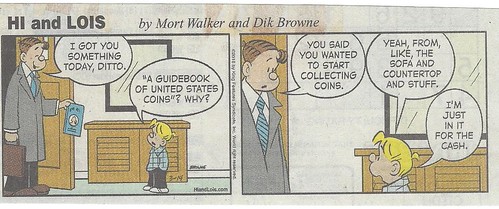
ON UNDER-RESEARCHED AREAS OF NUMISMATICS
Persian Civic Coinage
Paul Schultz writes:
A very under-researched area of numismatics is Persian Civic Coinage, made from about the 1600s to the 1800s. There were a few articles written in the 1920s or so, but they were brief and very incomplete. I have found nothing else on the topic.
To read the earlier E-Sylum article, see:
UNDER-RESEARCHED AREAS OF NUMISMATICS
(www.coinbooks.org/esylum_v19n12a20.html)
THE BOOK BAZARRE
NUMISMATIC ORIGIN STORIES
Denis Loring writes:
When I was eight years old, my father reached into the top drawer of his dresser and handed me an 1832 half dollar (which I still have), 1865 three cent nickel, and 1864 two cent piece. "These never did anything for me," he said. "Maybe they'll interest you." Sixty years later, I guess they did.
Bill Hyder writes:
My sister and I would spend two weeks in the summer with my grandparents in Yachats on the Oregon coast. Grandma had a gallon jar filled with pennies (this was 1961). On trips to Newport for groceries, we would always stop at the five and dime for an activity. Grandma bought the Whitman penny boards and turned me loose with her penny jar. A collector was born. Six years later, Art Johnson, a CPA with an office behind my dad's Texaco station, insisted that I join the ANA. I did in November 1967 and the rest is history.
Ken Spindler writes:
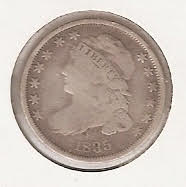 In 1961, when I was 9, I was in the checkout line with my father in the Wildwood Shopping Center's Peoples Drug Store in Bethesda, MD,
when he was given an 1835 dime in change. He noticed it because it was larger than normal. He knew a neighbor collected coins, so we looked it up in
his Red Book that night. (I still have the coin.)
In 1961, when I was 9, I was in the checkout line with my father in the Wildwood Shopping Center's Peoples Drug Store in Bethesda, MD,
when he was given an 1835 dime in change. He noticed it because it was larger than normal. He knew a neighbor collected coins, so we looked it up in
his Red Book that night. (I still have the coin.)
Next, at summer camp (in Oakland, MD, near Deep Creek Lake), a counselor took us boys to a coin shop, where the proprietor had us look at what was in our pockets. I had a 1919 cent and was told it was worth a nickel. (incredibly exciting) For 1961 Christmas my mother bought me a paperback U.S. coin book (which I still have, falling apart, but it's in storage). That got me hooked on "checking change." A year later I inherited half of my grandfather's foreign coin collection. He was from Poland and used to ask foreign-born coworkers for coins from their home countries.
Then my mother started bringing home coins from her world travels. The collector brother of a neighbor heard about my interest, and sent me an assortment of foreign coins which included several heavily worn Spanish colonial silver coins from the 1700s. Richard S. Yeoman’s Modern World Coins, and a few years later, William D. Craig’s Coins of the World 1750-1850, obtained from the coin department (Mrs. Webb?) of the Woodward & Lothrop department store at Friendship Heights, Chevy Chase, MD, were revelations. It all snowballed from there.
Bob Fritsch writes:
My collecting was a direct result of my Navy service, which lasted for 24 years. It started in 1968 as I was transferring out of Japan to an assignment in Germany. I had kept all my Japanese pocket change in a 3-pound coffee can which was almost full after a year and a half. Toward the end, I took out one of each denomination and date then spent the rest on one huge Sayonara party. Living on the Continent for 3 years only built the collection which continued expanding as I went to new places. But it was after retirement that the collections took a new direction into medals, elongateds, woods, ancients, clubs, and many other things, but the best one of all is all the numismatic friends I have made over the years.
Karl Moulton writes:
When my second grade class was doing "show & tell", a classmate brought an 1817 large cent that belonged to his grandmother. When I held it in my hand, I wondered why it was so large, and only worth just a "penny"? It didn't make any sense compared to the Lincoln cents I had in my pocket. Then I wondered who had owned it? The "8" in the date made me think about the past owners of the 155 year old coin.
I wanted to maybe get that cent, so I went with my classmate several blocks to grandma's house after school. She showed me others from the 1850's (I also wanted one of those), along with the shiniest 1958 "penny" I had ever seen. She told me it was from a proof set (whatever that was). We made a deal that I would rake all of the leaves from the yard "until they were all gone from the tree" for the 1817 "penny". My first job took the next several weeks on Saturday mornings. After I got the 1817 cent, I then went to the local coin shop downtown, purchased a "Redbook", and started collecting.
To read the earlier E-Sylum article, see:
HOW DENNIS TUCKER GOT STARTED IN NUMISMATICS
(www.coinbooks.org/esylum_v19n12a19.html)
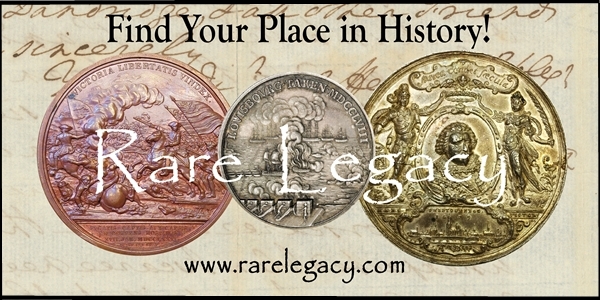
JOSEPH FARRAN ZERBE (1871-1949)
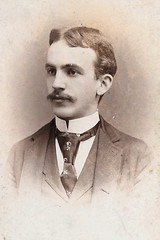 Joseph "Farran Zerbe" (1871-1949), ... was born, April 16, 1871 at Tyrone, Pennsylvania, son of James Albert Zerbe (1842-1880),
an Express Messenger, and Bridget Mary McAvoy (1852-1926).
Joseph "Farran Zerbe" (1871-1949), ... was born, April 16, 1871 at Tyrone, Pennsylvania, son of James Albert Zerbe (1842-1880),
an Express Messenger, and Bridget Mary McAvoy (1852-1926).
He was educated in public and in private schools. He was a newspaper delivery boy for the Tyrone Daily Herald from 1880 to 1889.
As the legendary story goes when at age eleven in 1882 a customer paid him in a French 50 centimes pièce, which was refused as a
cash deposit by his local bank. This, purportedly whet his curiosity setting him on a course into the study of foreign numismatics.
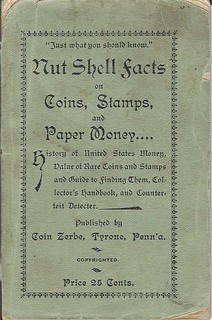 Over time this passion and research resulted in his publishing a small book : "Just What You Should Know" Nut Shell Facts on
Coins, Stamps and Paper Money (Coin Zerbe, Tyrone, Pennsylvania, 1899). As Charles Davis very succinctly describes it in his American
Numismatic Literature, No. 1207: “A short history of numismatics in America, a guide to values and tips for finding coins, and even a counterfeit
detector. Very scarce with a four page supplement.”
Over time this passion and research resulted in his publishing a small book : "Just What You Should Know" Nut Shell Facts on
Coins, Stamps and Paper Money (Coin Zerbe, Tyrone, Pennsylvania, 1899). As Charles Davis very succinctly describes it in his American
Numismatic Literature, No. 1207: “A short history of numismatics in America, a guide to values and tips for finding coins, and even a counterfeit
detector. Very scarce with a four page supplement.”
On January 25, 1889, it was reported in his local newspaper that our coin crank narrowly escaped being run over by the cars on Spring Street, Tyrone, Pennsylvania. At this time he owned a stationery store, the "Zerbe Cycle Co.", Books, Stationery, Pianos, Organs, Toys, Music, Art Materials, Bicycles, Sporting Goods, and Musical Instruments, on the corner at 1123 Pennsylvania Avenue, Tyrone, Pennsylvania. He sold just about everything marketable in that store and ran seasonal ads at Christmas vending toys, candies, and various items for stocking stuffers.
In 1893, according to his nephew Jerome McAvoy, Farran Zerbe exhibited his collection of Moneys of the World at the "Columbian Exposition" Chicago World's Fair, Chicago, Illinois, and was in charge of the government exhibit on the commemorative coins issued for the occasion : Isabella Quarter and Columbus Half Dollar, and according to several numismatists Zerbe both publicized and sold them.
He joined the ANA on July 25, 1900 and is Member No. 197. On April 2, 1900 he bought $50.00 in coins from S. H. & H. Chapman and gave them his want list. He bought and sold paper money.
According to Zerbe in an interview "since he was nine years of age he has been a collector of rarities" i.e., in 1880, so ran the story in The Pittsburgh Press, Wednesday, March 11, 1903, page 6. The story relates that he was en route to Saint Louis to register for his exhibit in March 1903 proposing to exhibit a fictional billion dollar gold piece 40 feet in diameter and 30 inches thick. Many of his coins and stamps and paper money are enumerated in this must read story.
In 1904 the ANA elected him as first vice-president. From that first ANA convention for him that year he would attend 27 more during his lifetime, about 71 per cent of the 38 held up to 1941 when he became too feeble to travel. He was also a member of the British Numismatic Society of London.
In 1906 he was in San Francisco during the earthquake and serendipitously helped save J. C. Lighthouse's coin collection. As the story goes Zerbe begged Lighthouse to examine his collection stored in the vault at the Palace of Art. Lighthouse took the coins out and brought them to Zerbe at his [Lighthouse's] home. He spent the entire day examining the coins and very fortunately too late to return them to the vault, which the following morning was ruined by the earthquake and fire.
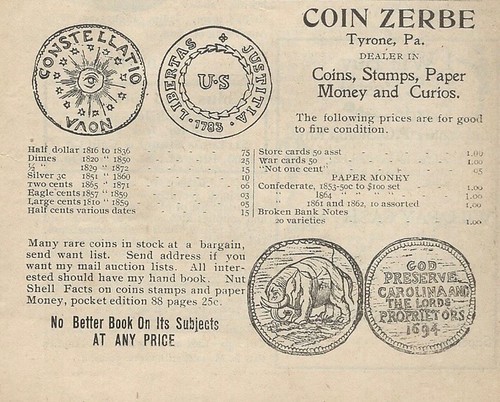
In 1907 he was elected president of the ANA. Consequently, he served as the 7th President of the ANA from September 4, 1907-August 14, 1909. He was an itinerant exhibitor an lecturer of "Moneys of the World" 1907-1914, and 1920-1928, which terminated upon the sale to Chase National Bank.
In 1907 he began the traveling exhibit circuit publishing Money Talks, as a promotional pamphlet about the exhibition given out in the various banks which held the exhibit. At these exhibitions he also gave free booklets titled Money Facts bearing the imprint of the Bank where the exhibit was held.
In 1908, he purchased The Numismatist from the estate of the late Dr. George Heath. Zerbe became the owner, editor and publisher of The Numismatist 1909-1910.
On Wednesday, May 6, 1908, he married an older woman named Bessie Garner Knox (1862-1935), of Freehold, New Jersey, at Trenton, New Jersey. The Altoona Tribune and the Tyrone Daily Herald reported that Zerbe was living at Columbus, Ohio at the time. The romance began during the Louisiana Purchase Exposition. In June 1908 he and his new bride traveled to Cumberland, Maryland to exhibit his Moneys of the World at the Third National Bank.
Zerbe's seminal work on the "Lesher Referendum Pieces" was published in the American Journal of Numismatics Volume 51, 1919. Without permission or consultation whatsoever B. Max Mehl reprinted this work in his own periodical, Mehl's Numismatic Monthly, May issue, setting off a private war. Both the ANS's and Zerbe's good nature quickly forgave the peccadillo of Mehl who was earnestly contrite.
In July 1926, Zerbe published his chef d'oeuvre, a profusely illustrated seventy-page essay in The Numismatist listing over 140 different medals and tokens partially relating to the Bryan Satirical Pieces during Bryan's Campaigns of 1896 and 1900, some of which are called the Bryan Money and Bryan Dollars.
In 1928, he sold his traveling "Money of the World" collection and library to Chase National Bank, New York, forming The Chase National Bank Collection of Moneys of the World Museum and as its founder being appointed the museum's first curator. Among the more notable American coins were Willow, Oak and Pine Tree New England Shillings of 1652, an 1804 U.S. Silver Dollar, a 1792 patter quarter dollar, and a 1709 Colonial Bill of Credit of New York printed by William Bradford.
In August 1939 he retired as curator of The Chase National Bank Collection of Moneys of the World Museum. His successor was Vernon L. Brown in 1939, who was hired by him in 1931.
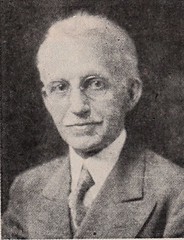 In 1944 he was awarded "Honorary Membership of the ANA" for his dedication, contributions, and service to the field of
numismatics. He served as the Historian of the ANA during his final years until his demise.
In 1944 he was awarded "Honorary Membership of the ANA" for his dedication, contributions, and service to the field of
numismatics. He served as the Historian of the ANA during his final years until his demise.
He fell ill in October 1949 and was confined to bed. He died at New York, on Sunday, Christmas Day, December 25, 1949, just a few months short of turning 79.
Zerbe never cared about praise for his research and work and from this spirit of modesty submitted many articles for publication in The Numismatist signed by a pseudonym, being a punster "one of his favorites being "Portuguese Joe". The double entendre pun referring to the character in Robert Louis Stevenson's In the South Seas, and numismatically the famed Portuguese Johannes series of gold coins (1722-1835), commonly called a Portuguese Joe. In 1955 when the bank merged with the Bank of Manhattan to form The Chase Manhattan Bank the museum name also changed to The Chase Manhattan Moneys Museum. It moved to the Rockefeller Center Tourist Complex. By February 1978 the Chase collection was loaned to the Smithsonian. THe ANS was slated to receive some of the rare coins including the 1804 Silver Dollar. But in December 1979 the Zerbe-Chase Manhattan Collection was gifted to the Smithsonian.
The Denver hoard story comes from an article by Herbert Brand in the may 1958 issue of The Numismatist, titled "Incident in the Life of Farran Zerbe." John Lupia adds:
Yes, a very neat story indeed! When I first read it my heart was pounding with excitement until it came to the part where Zerbe went to the bank the next day and got the part about mother at dinner! It may be true, but unless a hoard of private gold surfaced out in the Denver area in the past 58 years there is no way of knowing the veracity of the story.
To read the complete article, see:
ZERBE,
JOSEPH FARRAN
(https://sites.google.com/site/numismaticmallcom/encyclopedic-dictionary-of-numismatic-biographies/zerbe-joseph-farran)
THE HIGH RELIEF LIBERTY SERIES
In answer to my question about the origin of the 2017 high-relief gold coin, Citizens Coinage Advisory Committee member Heidi Wastweet writes:
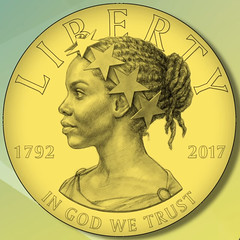 The High Relief Liberty series is not Congress driven. It was program recommended by CCAC and adapted by the Mint as is allowed in the Mint
parameters.
The High Relief Liberty series is not Congress driven. It was program recommended by CCAC and adapted by the Mint as is allowed in the Mint
parameters.
That seems to be common notion that there was some kind of directive saying we were told to do an African American Liberty, or that Obama pushed this agenda or that it is an attempt at radical political correctness. (I’ve been reading the online comments). The truth is much simpler - We members of the CCAC wanted a new medal series to stimulate artistic freedom and creativity and therefore create more interest in collecting.
We looked at how the Australians have the ongoing Kookaburras that come out with a new design every year, as does the Chinese Panda. In the US we issue the same Walking Liberty every year with just a different year on it. We thought it would be great to have a new Liberty every year. It is within the Mint’s charter to issue none monetary metals at will. (I may not be wording with legal accuracy but you get the idea). So in discussing how this Liberty series would play out we believed we should not endlessly imitate the past masters, because no one can do it better than they did already. Instead, we wanted a series that would rival world coins and medals and represent our modern country while attracting new collectors.
How can we do THAT? We felt the best way to do that is to give freedom to the artists to be creative and reflect the diversity of today’s citizens. Last year we chose a standing Liberty that was not distinctly caucasian but not specifically any particular race. It was just a solid beautiful design. This year we had many submissions again as you saw and this is the one that got the most votes. There was no direction to chose a black liberty. The CCAC and the CFA thought this was simply the most intriguing design of the group.
We also asked the Mint to save all the designs that received 10 or more points and add those to the submissions for next year. That group includes another African American face, an Asian face and several more caucasian or non-distinct nationalities. I hope that people will come to look at this series as a whole … a beautiful diverse series.
The modern inspiration for the high-relief gold series was the 2009 ultra-high-relief $20 gold coin with Augustus Saint-Gaudens' original 1907 design. See the E-Sylum article linked below for a report of the first striking ceremony with Mint Director Ed Moy. Here are images of high-relief coins from the PCGS CoinFacts site. -Editor
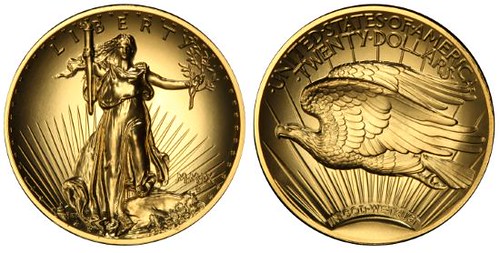
2009 $20 Ultra High Relief Double Eagle (PCGS CoinFacts)
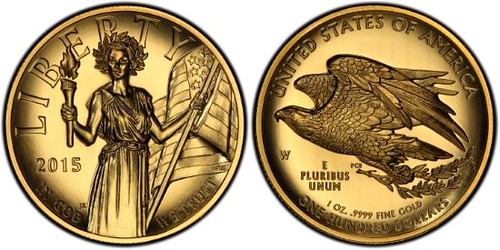
2015-W $100 High Relief Gold (PCGS CoinFacts)
On July 30 the Mint will launch the $100 high relief gold American Liberty coin, which could eventually become one of the most important issues of the modern era in U.S. coins if it is a success. That is because it will be both the first modern, high relief coin with a new design, and the first to portray a modern version of Lady Liberty, which is symbolically significant.
This coin is largely the brainchild of Gary Marks, who recently completed his term as chairman of the Citizens Coinage Advisory Committee, and the CCAC under his tutelage. Marks has been a strong advocate of the argument that American coins should not just reuse the classic designs of the past, and that they should push the envelope of medallic art by depicting a modern representation of Liberty which reflects the diversity of our country.
The new coin is intended to continue the vision that former U.S. Mint Director Ed Moy began with the very popular 2009 ultra high relief double eagle to promote a renaissance in American coin design. But that coin was released when gold was much less expensive and had an initial issue price of $1,189. It was made to demand and over the course of a year 114,427 of them were sold.
The cancellation of the companion silver medal of the same design is also unfortunate, as many buyers either wanted to pair them up, or planned to buy the silver medal because they are not able to purchase the gold coin. Hopefully the medal will be issued next year.
It would also help if the coin were the first in a new series as originally intended, but the Mint cancelled the plan to do that, and no rationale for doing so was provided when I asked them about it. Collectors tend to be wary of expensive one-off coins, which they see as a risky choice.
To read the complete article, see:
WILL THE AMERICAN LIBERTY HIGH RELIEF GOLD COIN BE
A SUCCESS? (www.coinworld.com/voices/louis-golino/2015/07/will_the_americanli.html#)
To read the earlier E-Sylum articles, see:
WAYNE'S NUMISMATIC DIARY: MARCH 20, 2016
(www.coinbooks.org/esylum_v19n12a26.html)
MINT DIRECTOR MOY STRIKES FIRST 2009 ULTRA-HIGH-RELIEF DOUBLE EAGLES
(www.coinbooks.org/esylum_v11n48a14.html)
For more information from PCGS CoinFacts, see:
2009 $20 Ultra High Relief Double Eagle (Regular Strike)
(www.pcgscoinfacts.com/Coin/Detail/407404)
2015-W $100 High Relief .9999 Fine, PL (Regular Strike)
(www.pcgscoinfacts.com/Coin/Detail/546021)
THE BOOK BAZARRE
NEW Banknote Yearbook, Paper Money of England, Scotland and IrelandNEW 2016 Olympic Coin Catalog Helsinki to Rio, still SEALED
U.S. MINT REAPPOINTS SCARINCI AND MORAN TO CCAC

The United States Mint today announced the reappointment of two members to the Citizens Coinage Advisory Committee (CCAC) -- Donald Scarinci and Michael F. Moran.
 Mr. Scarinci was reappointed based on the recommendation of Senate Minority Leader Harry Reid. Mr. Scarinci was first appointed to the CCAC
in 2005, and was reappointed in 2008 and 2012. Mr. Moran was reappointed based on the recommendation of Senate Majority Leader Mitch McConnell. Mr.
Moran was first appointed in 2011.
Mr. Scarinci was reappointed based on the recommendation of Senate Minority Leader Harry Reid. Mr. Scarinci was first appointed to the CCAC
in 2005, and was reappointed in 2008 and 2012. Mr. Moran was reappointed based on the recommendation of Senate Majority Leader Mitch McConnell. Mr.
Moran was first appointed in 2011.
Mr. Scarinci, the senior partner in one of the largest law firms in New Jersey, has been a collector of coins and medals for more than 30 years, and has written and lectured extensively about medallic art and design. In 2005, Mr. Scarinci was appointed by the Department of the Treasury to serve on the CCAC and is now in his third term. He lends his expertise as a nominating judge for the Krause Coin of the Year Award and serves on award committees for the American Numismatic Society and the American Numismatic Association.
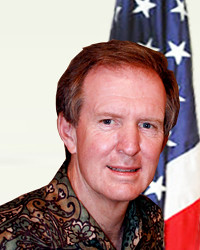 Mr. Moran is an award winning numismatic author, lecturer, and researcher. His works include an article about the United States Mint at San
Francisco during the great earthquake of 1906, which won the American Numismatic Association's (ANA) 2006 Heath Literary Award, and the
masterwork Striking Change - The Great Artistic Collaboration of Theodore Roosevelt and Augustus Saint-Gaudens. He currently serves as a managing
partner of a major building products supply company in western Colorado.
Mr. Moran is an award winning numismatic author, lecturer, and researcher. His works include an article about the United States Mint at San
Francisco during the great earthquake of 1906, which won the American Numismatic Association's (ANA) 2006 Heath Literary Award, and the
masterwork Striking Change - The Great Artistic Collaboration of Theodore Roosevelt and Augustus Saint-Gaudens. He currently serves as a managing
partner of a major building products supply company in western Colorado.
Established by the Secretary of the Treasury pursuant to an Act of Congress in 2003, the CCAC advises the Secretary on theme and design proposals relating to circulating coinage, bullion coinage, Congressional Gold Medals, and national and other medals produced by the Mint. The CCAC also makes commemorative coin recommendations to the Secretary and advises on the events, persons, or places to be commemorated, as well as on the mintage levels and proposed designs. The CCAC submits an annual report to Congress and the Secretary describing its activities and providing recommendations.
The Congressional leadership recommends candidates for four of the CCAC member positions to the Secretary of the Treasury from among citizens who are specially qualified to serve by virtue of their education, training or experience. The Secretary fills seven additional positions through an open application process from among citizens who are specially qualified - one in each of the following areas: numismatic curation, medallic arts or sculpture, American history, and numismatics. The Secretary exercises direction and authority over the CCAC. The Mint is responsible for providing the necessary administrative support, technical services, and advice to the CCAC.
To read the complete press release, see:
Two Members Reappointed to Citizens Coinage Advisory Committee
(www.usmint.gov/pressroom/?action=press_release&id=1777)
To read the earlier E-Sylum article, see:
CITIZENS COINAGE ADVISORY COMMITTEE SEEKS TWO MEMBERS
(www.coinbooks.org/esylum_v19n12a27.html)
SCARINCI ON THE BOYS TOWN COMMEMORATIVE COIN DESIGNS
 At its March meeting in Washington DC, the Citizens Coinage Advisory Committee (CCAC) considered the designs for a three coin set—gold $5,
silver $1, and clad $1/2 dollar—to commemorate the one hundredth anniversary of Boys Town. It was the first time that obverses and reverses were
paired by artist for presentation to the committee.
At its March meeting in Washington DC, the Citizens Coinage Advisory Committee (CCAC) considered the designs for a three coin set—gold $5,
silver $1, and clad $1/2 dollar—to commemorate the one hundredth anniversary of Boys Town. It was the first time that obverses and reverses were
paired by artist for presentation to the committee.
Instead of presenting coin designs as separate obverses and reverses to be voted on by the CCAC and the Commission on Fine Arts (CFA) and paired together by them, the Mint encouraged its artists to design a complete coin and consider the round metal palate as a four dimensional object. The CFA will review the designs presented in this format for the first time as well during its meeting this week.
It may well have been the most complicated coin program the CCAC considered in a decade, but his was not due to the pairings. There were over thirty good designs for all three denominations and the sponsoring organization was very involved in the design process from the beginning. Their representatives worked with the artists and attended CCAC meetings to challenge us to help them select a set of coins that would both tell the story of Boys Town and attract buyers beyond the U.S. Mint’s collector base.
The surcharge can result in big dollars for the host organization if the coins sell, but commemorative coins do not always sell very well. Many commemorative coins have low mintages like the 2013 Five Star General coin program that sold 160,000 of the $1 and $1/2 dollar coins in both proof and uncirculated and 19,157 of the gold proof and uncirculated coins. That was a particularly unattractive set of portrait coins without much support from collectors or from members of the sponsoring organization.
As a base line, it can be estimated that “hard core” collectors, repeat buyers of US Mint Commemoratives, account for about 30,000 to 40,000 buyers of clad and silver and about 4,000 to 5,000 buyers of the gold coins. The “hard core” will buy one each of the uncirculated and proof. Collectors will buy these coins every year just to keep their collection complete. Unfortunately for the sponsoring organizations, this is not enough for the U.S. Mint to recapture their costs. To get a surcharge, the coins must sell enough so the Mint breaks even before the surcharge kicks in.
Pretty coins sell. The 2014 Baseball National Hall of Fame coin sold over 250,000. This did not happen just because baseball is popular or because the sponsoring organization pushed the coin. This happened because the coin was interesting and popular. The cup shaped clad $1/2 received the Krause Coin of the Year Award for world coins minted in 2014. The silver dollar baseball coin received the Krause award for “Best Crown.”
Ugly coins do not sell. While the Girl Scouts of America might be great at selling cookies, they could not sell their ugly commemorative silver dollar. Only 115,822 out of the 350,000 maximum mintage of both the proof AND uncirculated coins were sold. The Girl Scouts of America got the coin design they wanted, but few people bought it.
The sponsoring organization very often needs to make a choice—either commemorate the organization in a traditional way, or pick creative designs that can sell beyond the “hard core” collector base and make money for the organization through the surcharge. Boys Town wanted to do both and they put in the time and let go of their original pre-conceived notions of what a commemorative coin should look like to accomplish it.
Boys Town still got the portrait they wanted of Father Edward J. Flanagan, but the portrait is on the lower mintage gold coin. The fact that each coin in the three coin set is designed by the same artist for the first time in the modern commemorative coin series will be a selling point. In addition, the silver dollar design has a lot of potential to become very popular.
To read the complete article, see:
Boys Town Commemorative Coin Set is a First
(http://donaldscarinci.com/boys-town-commemorative-coin-set-first/)
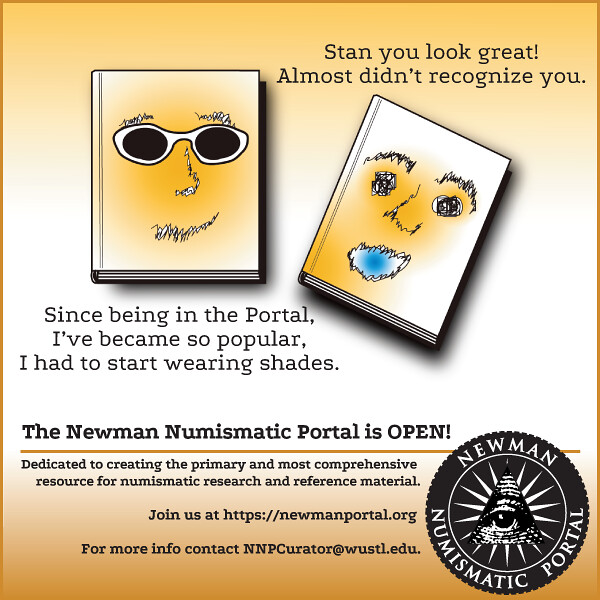
NATIONAL PARK SERVICE COIN LAUNCH EVENT PHOTOS
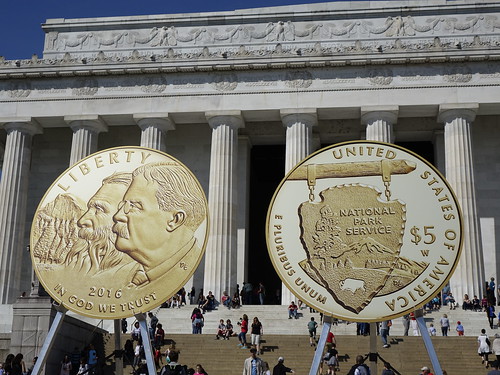
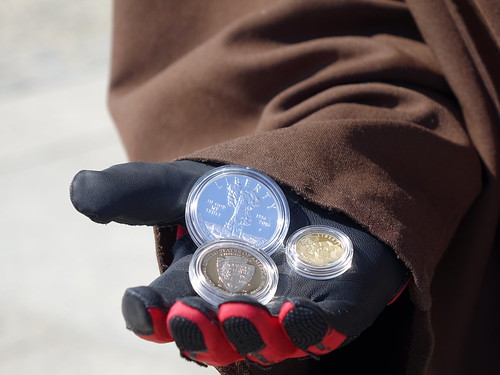
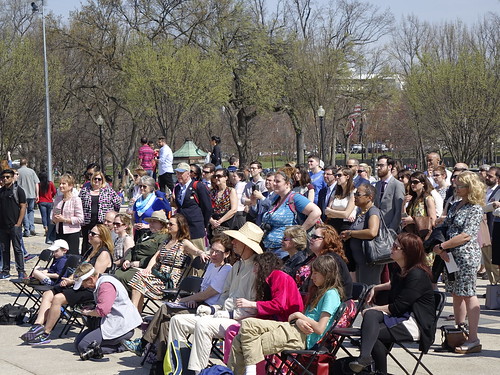
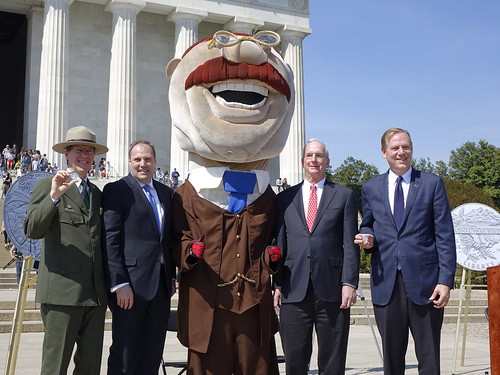
Victor Knox, National Park Service Associate Director for Park Planning, Facilities, and Lands, U.S. Mint Principal Deputy Direct Rhett Jeppson, Gerry Gabrys (Guest Services, Inc.), and National Park Foundation President Will Shafroth stand with Washington National's Teddy Roosevelt after the ceremonial sales kick-off for the 100th Anniversary of the National Park Service Commemorative Coin.
To view the complete set of photos see:
100th Anniversary National Park Service
Commemorative Coin Program Ceremonial Coin Sales Event (https://www.flickr.com/photos/129211989@N07/
sets/72157664074425253/with/26001908206/)
THE 29TH MINT DIRECTORS CONFERENCE
President's Message
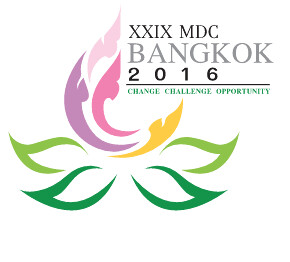 As the current president of the MDC organization, it is an honor for me to welcome you to the 29th Mint Directors Conference in the
outstanding Thailand, a country rich in culture, natural diversity, and abounding adventures.
As the current president of the MDC organization, it is an honor for me to welcome you to the 29th Mint Directors Conference in the
outstanding Thailand, a country rich in culture, natural diversity, and abounding adventures.
The Conference has distinguished itself for being one of a kind and celebrates the union and collaboration between our mints, special members and associate members. Currently, we are forty-eight mints working with common goals and every year we held meetings and reunions to exchange valuable information related to all monetary matters.
Last year the theme of the 28th conference held in Mexico was "Shining the Future" where the main objective was to give us a common goal to generate an improved industry; this year The Royal Thai Mint proudly represented by Mr. Chakkrit Parapuntakul, brings us the theme of "Change, Challenge, Opportunity" to prepare us to face the upcoming dares in our industry which I am certain will bring an immense value into the research of the minting study.
I wish all the participants a rewarding conference week and that this edition of the Mint Directors Conference delivers us the tools to overcome and exceed positively the challenges in front of us.
Guillermo Hopkins
CEO Casa de Moneda de Mexicol
The Royal Thai Mint
The Royal Thai Mint was established in 1860, under the Royal Decree of King Rama IV, in the Grand Palace. It was named the "Sitthikarn
Mint".
In order to increase production capacity to meet the increasing demand of coins, in 1875 King Rama V ordered a new efficient machine from England and the construction of the 2nd Mint in the Grand Palace, opposite the old Mint.
In 1902 King Rama V ordered the 3rd Mint to be built on Chao Fah road, beside Klong Lod to accommodate the continually expanding economy.
Later in 1930, during the reign of King Rama VII, the Sitthikarn Mint Department was demoted to a factory under the Royal Opium Department due to the worldwide economic recession. In 1933 the "Mint Section" was reopened under the Royal Treasury Department to produce coins, and later it became a division of the Treasury Department, Ministry of Finance.
In order to increase the coin production capacity to meet the demand of the economic system, in 1972 the 4th Mint was built off Pradiphat road. This new Mint was able to produce about 750 million coins per year.
The construction of the present Mint began in 1996 in an area of 50.4 acres at the 34th-35th kilometer on Phahonyothin road in Phatum Thani province. The building was completed and officially opened on July 2, 2003.
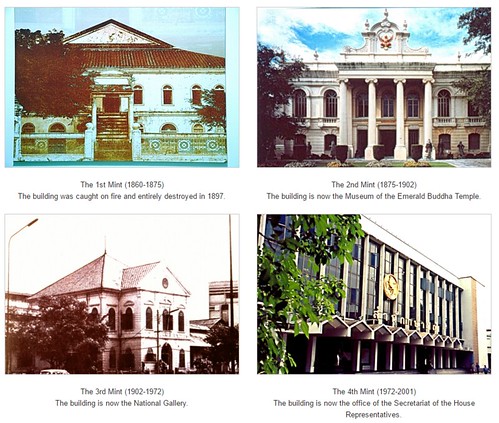
For more information, see:
http://www.mdc2016.com/
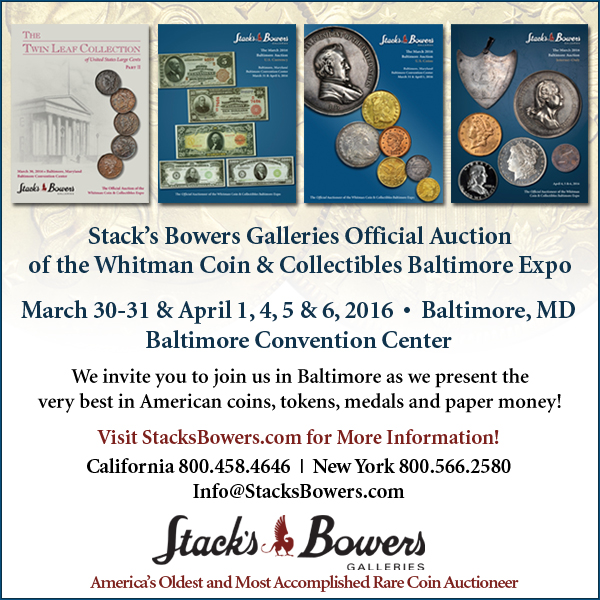
A SEAL COMMISSIONED BY ROBERT THE BRUCE
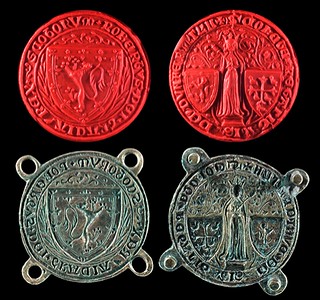 To provide a chance to keep it in the UK, Culture Minister Ed Vaizey has placed a temporary export bar on a two-part bronze seal
commissioned by Robert I, King of Scotland.
To provide a chance to keep it in the UK, Culture Minister Ed Vaizey has placed a temporary export bar on a two-part bronze seal
commissioned by Robert I, King of Scotland.
Authorised in 1322 by Robert the Bruce, it was used to seal customs documents by Dunfermline Abbey as proof of their authority and endorsement by the King.
The upper part of the seal is engraved with St Margaret, Dunfermline Abbey’s founding saint, and the lower part bears the royal arms of Scotland. The inscription on the side translates as ‘Robert, by the Grace of God, King of the Scots’. The seal is extremely rare, and is of outstanding significance for the study of medieval Scotland, and medieval goldsmiths’ work.
Culture Minister Ed Vaizey said: This amazing artefact represents one of the few objects directly associated with Robert the Bruce’s reign. Its departure would not only result in the loss of this irreplaceable item, but it would also strip us of the opportunity to learn more about this exceptional figure.
Culture Minister Ed Vaizey took the decision to defer granting an export licence for the seal matrix pair following a recommendation by the Reviewing Committee on the Export of Works of Art and Objects of Cultural Interest (RCEWA), administered by The Arts Council.
The RCEWA made their recommendation on the grounds that it was of great value for the study of medieval goldsmith work and sigillography and the re-establishment of Scottish institutions under Robert the Bruce.

To read the complete article, see:
A
seal commissioned by Robert the Bruce is at risk of being exported from the UK
(http://artdaily.com/news/85993/A-seal-commissioned-by-Robert-the-Bruce-is-at-risk-of-being-exported-from-the-UK#.VvbMkvkrKhc)

THE 2016 ROYAL MAUNDY CEREMONY
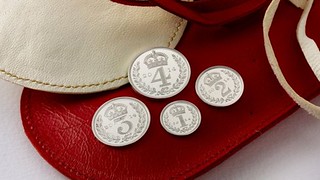 The Queen has handed out commemorative Maundy coins in a traditional royal service at St George's Chapel at Windsor Castle.
The Queen has handed out commemorative Maundy coins in a traditional royal service at St George's Chapel at Windsor Castle.
Ninety men and 90 women, representing her 90 years, were presented with the coins in recognition of service to the Church and community.
The Queen was accompanied by the the Duke of Edinburgh. It is the first time the service has been held at St George's Chapel since 1959.
Each recipient received two purses, one red and one white. This year the red purse contained a £5 coin, commemorating the Queen's 90th birthday, and a 50p coin commemorating the 950th anniversary of the Battle of Hastings.
Royal Maundy can be traced back in England to the 13th Century. The service derives its name from the Latin "mandatum", Jesus Christ's commandment to his disciples to "love one another", after he had washed their feet on the day before Good Friday.

This year the Queen gave coins, which are known as Maundy money, to 180 deserving senior citizens who have been recommended in recognition of their service to the Church and community. They are traditionally selected from a single diocese but this year have been chosen from across the country.
To read the complete article, see:
Maundy Thursday: Queen hands out 90th birthday coins (www.bbc.com/news/uk-35890750)
David Sundman shared this article from The Times, with an interesting side note to the story. Thanks. -Editor
In one of the longest-standing acts of royal devotion, Tim O’Donovan has spent more than 35 years compiling the comings and goings of the royal family.
Every year since 1979 the retired insurance broker has provided The Times with an annual summary of royal engagements, a service which has given readers a unique insight into the royal family’s devotion to duty or, in some cases, lack of it.
Now Mr O’Donovan, 84, has featured in a royal engagement himself after he received Maundy money from the Queen at the annual church service.
In a moving ceremony held on the Queen’s home territory, St George’s Chapel at Windsor Castle, for the first time since 1959, she handed commemorative coins to 180 pensioners.
Mr O’Donovan, who is also a retired lay steward for St George’s Chapel, began keeping the record “out of curiosity”, he said. “I just thought perhaps one should know what the royal family are doing.”
It was, he said, a privilege to be part of the service, instead of watching on.
To read the complete article, see:
Queen’s Maundy
tribute for a royalist (www.thetimes.co.uk/tto/news/uk/royalfamily/article4721233.ece?shareToken=08f67fd8d2b9efc6191ed88df3a14376)
COINS OF THE ROYAL MAUNDY
It is said the the origin of the Maundy Ceremony dates back to the reign of Edward II, when goods were given to the poor by the monarch. It was not until the time of Elizabeth I that the idea of giving redemption money in the place of gifts was made.
It seems that for many years the coins were just normal circulating coins of the time, usually silver pence. The use of other denominations was made, but it is not until about 1800 that special sets of coins of the denominations 1d, 2d, 3d and 4d were minted.
After 1820 it becomes clear that the small silver coins were struck solely for use in the Maundy Ceremony, as it is unusual for them to turn up in worse than VF condition. From 1822 complete sets of the four coins are available every year, but this does not make them an easy series to collect.
During the reign of George IV the sets were struck from 1822 to 1830. The threepence coin of 1822 is unusual in that the punch used for the head is that of the twopence, and so seems rather small.
Victorian Maundy sets are relatively common, as they could be ordered from the bank by anyone who chose to do so. After 1908 Edward VII gave instructions that the sets would be available only to the recipients and those involved in the ceremony, so since 1909 the sets are much scarcer. In addition, the number of recipients and the amount they receive is equal to the monarch's age, so the supply gets more plentiful as the reign progresses.
It may not be realised that the personal presentation of the money by the monarch is a relatively recent phenomenon. In 1932 George V presented the coins himself, the first time this had been done since the 17th century.
In 1920 the silver content was reduced from 0.925 to 0.500 along with all other silver coins of the UK. Interestingly, in 1947 when silver was changed to cupronickel, the Maundy coinage reverted to 0.925 silver.
The portrait used for the Maundy coinage of Elizabeth II has remained unchanged since 1953. The only obverse change was the legend, so the issues of 1953 are in very great demand.
In 1971 the whole series was revalued as 1, 2, 3 and 4 new pence.
Charles II
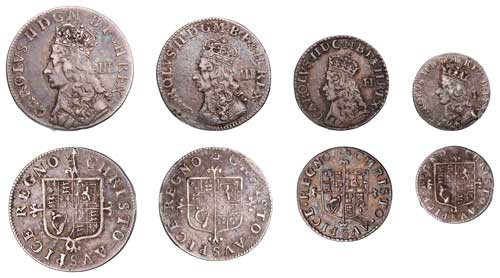
James II
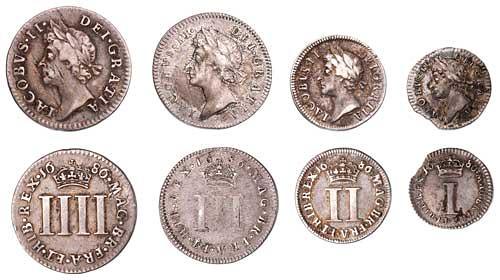
George IV
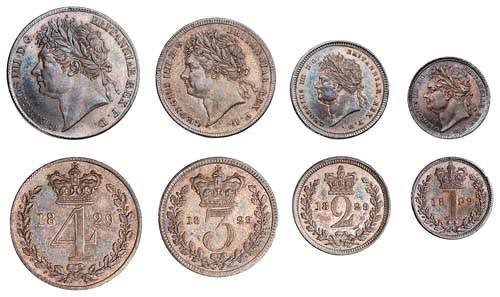
Edward VII
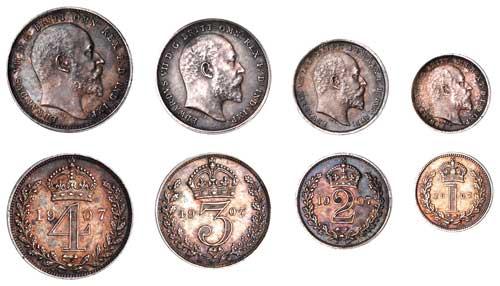
Elizabeth II
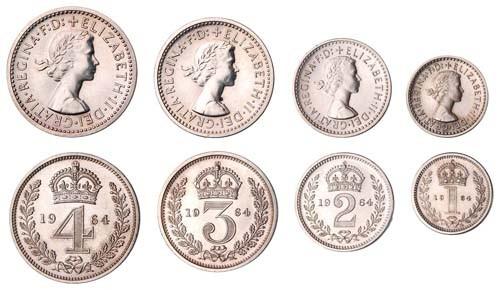
To read the complete web pages, see:
www.coins-of-the-uk.co.uk/maund.html
www.coins-of-the-uk.co.uk/pics/maundy.html

ORIGIN OF HOBO NICKELS AND EARLY NICKEL CARVERS
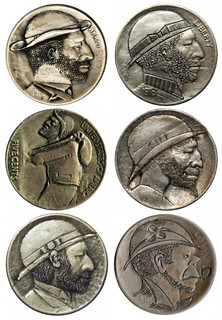 In 1913 the US Mint issued a new 5¢ coin. The obverse depicted the head of an American Indian and the reverse featured a bison or
buffalo. This coin quickly came to be known as an Indian head or Buffalo nickel. When the Indian Head 5¢ was introduced in 1913, it was a
natural attraction for would-be coin engravers or untalented individuals who at best did little more than deface the coins with crude scratches,
punches and graffiti. The big Indian head was a radical departure from previous coin designs. The head was much larger than heads on previous coins,
which gave the artists a bigger template to work on, and allowed for more fine details.
In 1913 the US Mint issued a new 5¢ coin. The obverse depicted the head of an American Indian and the reverse featured a bison or
buffalo. This coin quickly came to be known as an Indian head or Buffalo nickel. When the Indian Head 5¢ was introduced in 1913, it was a
natural attraction for would-be coin engravers or untalented individuals who at best did little more than deface the coins with crude scratches,
punches and graffiti. The big Indian head was a radical departure from previous coin designs. The head was much larger than heads on previous coins,
which gave the artists a bigger template to work on, and allowed for more fine details.
The head on the new buffalo nickel was a man. The heads on nearly all earlier coins were of women (Liberty heads, Barber and Morgan heads). A male head has larger and more rugged features (nose, chin, and brow) that can be altered in many ways. Either side of the host coin could be transformed by punching, carving or engraving into limitless number of designs. Often the buffalo reverse was altered into another animal or a man with a backpack. This was the origin of what we today call hobo nickels.
The standard hobo nickel has the Indian’s head altered into a man wearing a rounded derby style hat, with a beard, ear, and collar(s). Nicer specimens may have the profile changed, and possibly a cigar, cigarette, or wording added. Although usually referred to as “hobo nickels,” they are also sometimes referred to as “reworked,” “transformed,” “bum nickels,” “trench art,” or “prisoner nickels.”
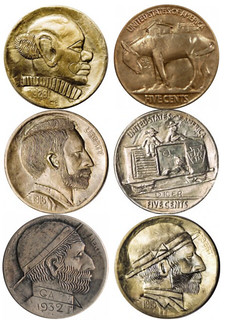 Nearly all the “old” or classic hobo nickels (before 1980) were made in obscurity by many hundreds of different people, not all of whom
were hobos. No records were kept, and nothing contemporary appears to have been chronicled or published by the early hobo nickel makers, or
reporters, or authors, on this little-known folk art practice of carving coins.
Nearly all the “old” or classic hobo nickels (before 1980) were made in obscurity by many hundreds of different people, not all of whom
were hobos. No records were kept, and nothing contemporary appears to have been chronicled or published by the early hobo nickel makers, or
reporters, or authors, on this little-known folk art practice of carving coins.
Although the names of the majority of these early carvers have been lost over time, their distinctive carving styles have made it
possible to identify the works of specific individuals. The Original Hobo Nickel Society (OHNS) has provided nicknames for some of these
artists. One of the better known of these is “Peanut Ear.”
In 1981 Delma (Del) K. Romines published a series of articles about hobo nickels in COIN WORLD magazine and then published the book HOBO NICKELS in 1982. These articles and books spawned a new generation of hobo nickel carvers, some of whom copied earlier classic designs from photos which had appeared in Del’s book. A second book, The Hobo Nickel was published in 1996 with Del’s wife, Joyce Ann Romines, listed as the author.
One of the best known early carvers was a hobo named George Washington “Bo” Hughes. “Bo” had originally been taught by another hobo carver named Bertram “Bert” Wiegand. “Bo” produced a large body of work, but carvings produced after a hand injury in 1957 were of lesser quality. Bert Top four nickels are by George Washington “Bo” Hughes. The bottom two are by Bert Wiegand. did not produce as large a body of work (carved nickels) as “Bo,” but the ones that have survived are all of Superior quality.
For more information on the Original Hobo Nickel Society, see:
www.hobonickels.org
LAND SCRIP
LAND SCRIP and land warrants were certificates from the Land Office granting people private ownership of certain portions of public lands. Congress authorized issues of scrip—some directly, others only after trial of claims before special commissions or the courts. It also placed restrictions on the use of certain kinds of scrip, making them less valuable than scrip with no limitations. Scrip was used primarily to reward veterans, to give land allotments to children of intermarried Native Americans, to make possible exchanges of private land for public, to indemnify people who lost valid land claims through General Land Office errors, and to subsidize agricultural colleges.
The greatest volume of scrip or warrants was given to soldiers of the American Revolution, the War of 1812, the Mexican-American War, and, in 1855, to veterans of all wars who had not previously received a land bounty or who had received less than 160 acres. Warrants of the first two wars were for land located in military tracts set aside for that purpose; those of the Mexican-American War allowed entry to any surveyed public land open to purchase at $1.25 an acre. A total of 68,300,652 acres was thus conveyed to 426,879 veterans, their heirs, or their assignees.
Treaties with the Choctaw (1830) and Chickasaw (1832) Indians of Mississippi and Alabama allocated several million acres in individual allotments and land scrip, all of which became the object of speculation by whites and fell into the hands of powerful white traders and a number of prominent political leaders. For the next thirty years, treaties with Indian tribes were almost impossible to negotiate without the inclusion of similar provisions for allotments and scrip, so powerful were the traders in those negotiations. Three issues of scrip to two bands of Chippewas and Sioux in the 1850s and 1860s, totaling 395,000 acres, similarly fell into the hands of speculators, who used it to acquire valuable timberland in Minnesota and California that they would otherwise have been unable to acquire legally.
In the Morrill Act of 1862, Congress granted each state 30,000 acres for each member it had in the House and Senate to aid in the establishment of agricultural and mechanical arts colleges. Land was given to states containing public domain; states with no public lands were given scrip that they had to sell to third parties to enter land in public domain states.
To read the complete article, see:
Land Scrip (www.encyclopedia.com/doc/1G2-3401802313.html)

SELECTIONS FROM HERITAGE NEWMAN INTERNET PART 1 SALE
The Newman Obsolete notes provide a fascinating panorama of 19th century American life and values. Their vignettes are often stunning little pieces of art that can be held in one hand. Although many notes share common themes, they are portrayed in a wide variety of styles. The three pairs of notes below show very different treatments of the same theme: transportation, hunting, and rural life. Complete descriptions are available by clicking the links.
Compare the stellar Bank of Athens 75 cents Civil War emergency change bill with the Georgia Rail Road & Banking Co. $5 below it. Both show a common transportation theme. Despite its necessary simplicity, showing only a rudimentary depiction of a train, the change bill is bold and colorful.
Athens, GA - Bank of Athens 75 Cents March 25, 1863
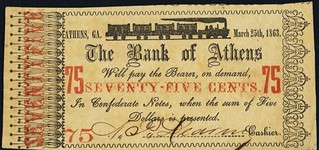
Athens, GA - Bank of Athens 75 Cents March 25, 1863 GA-5 G38. PCGS About New 50.
A much scarcer Civil War emergency change bill type from the bank, and it is in stellar condition. Printed on white paper without an imprint. A train is across the top between the location and date. Deep red protectors, numerals and text provide contrast. The average grade for a note from this tough-to-find series is Fine or so, when they are occasionally encountered. This might be the finest note known from the series.
To read the complete lot description, see:
Athens, GA - Bank of Athens 75 Cents March 25, 1863 GA-5 G38.
(http://currency.ha.com/itm/obsolete-banknotes/athens-ga-bank-of-athens-75-cents-march-25-1863-ga-5-g38-pcgs-about-new-50/a/241618-86489.s?ic4=GalleryView-Thumbnail-071515)
This intricate proof shows a highly detailed top center view of a train passing by a depot. Zooming in on the vignette in the left end panel shows an early passenger train with people riding on top of the cars: a smoke-filled and possibly perilous journey.
Athens, GA - Georgia Rail Road & Banking Co. $5
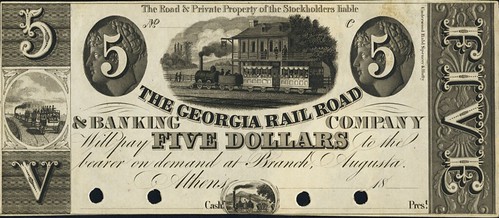
Athens, GA - Georgia Rail Road & Banking Co. $5 18__ GA-10 G24. Proof. PCGS Choice About New 58 Apparent.
This is a bold India paper proof by Underwood, Bald, Spencer & Hufty, and the second denomination from the Newman Collection we have cataloged from this very rare series. The original 1833 charter was for a railroad headquartered in Athens. That charter was amended in 1835 to allow for the company to operate a bank, and in 1840 the company's headquarters was moved from Athens to Augusta. The main vignette at top center shows a train and cars rolling down the tracks past a two-story depot office. At the left end is an early train in an oval. The right end panel shows a perpendicular FIVE on a background that resembles carved scrollwork. This is a great rarity.
To read the complete lot description, see:
Athens, GA - Georgia Rail Road & Banking Co. $5 18__ GA-10 G24. Proof.
(http://currency.ha.com/itm/obsoletes-by-state/georgia/athens-ga-georgia-rail-road-and-banking-co-5-18-ga-10-g24-proof-pcgs-choice-about-new-58-apparent/a/241618-86490.s?ic4=GalleryView-Thumbnail-071515)
Two very different types of hunting are shown in the next pair of notes. The green-tinted Mendenhall 5 cents has a very unusual layout with four scenes in the corners showing a day of deer hunting. It has a charming, stylized appearance.
Minneapolis, MN - Office of R. J. Mendenhall 5 Cents

Minneapolis, MN - Office of R. J. Mendenhall 5 Cents January 1, 1862 Hewitt A210-F5-1. Remainder.
This extremely rare scrip note is the Hewitt plate note. He reports only two examples on his census. A dazzling note, lithographed by Corlies & Macy, with the green "5" starburst in the center amplified by the green lace tint radiating outward. The text and obligations are contained within a modified football-shaped border. Hunting vignettes are outside, with the main events in the corners. Clockwise from upper left are: a stalking dog, an alert buck, a standing hunter, and a hunter taking a shot as his dog stands by.
To read the complete lot description, see:
Minneapolis, MN - Office of R. J. Mendenhall 5 Cents January 1, 1862 Hewitt A210-F5-1.
(http://currency.ha.com/itm/obsoletes-by-state/minnesota/minneapolis-mn-office-of-r-j-mendenhall-5-cents-january-1-1862-hewitt-a210-f5-1-remainder-pcgs-very-fine-35-apparent/a/241618-86791.s?ic4=GalleryView-Thumbnail-071515)
The dynamic Northhousen note could not be more different. A Native American holds the reins of his galloping horse with one hand as he spears the bison. The animals’ hooves have stirred up the dust and trampled the grass.
Northhousen, WI - Buffalo County Bank $1
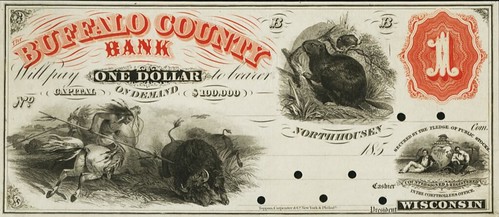
Northhousen, WI - Buffalo County Bank $1 185_ WI-600 G2a. Proof. PCGS Very Choice New 64.
An important proof from one of Wisconsin rarest banks. This is an exceptionally graphic India paper proof engraved and printed by Toppan, Carpenter & Co., New York & Phila. from a $1A-$1B-$5-$10 configured sheet. This is the last available proof in private hands. The bank never opened, but spared no expense in producing one of the most visual Badger State series. The $1 proof uses a vermillion title at the left and large color counter at the upper right. At the bottom left is a wide hunting scene set on the plains, showing the moment the Indian on his galloping horse spears the buffalo. At the upper right, two beavers busily gnaw on branches. Hole Punch Cancelled as made.
To read the complete lot description, see:
Northhousen, WI - Buffalo County Bank $1 185_ WI-600 G2a. Proof.
(http://currency.ha.com/itm/obsoletes-by-state/wisconsin/northhousen-wi-buffalo-county-bank-1-185-wi-600-g2a-proof-pcgs-very-choice-new-64/a/241618-87256.s?ic4=GalleryView-Thumbnail-071515)
Rural life and its chores are often featured on Obsolete currency. The Franklin Bank of Washington $5 proof shows an unusual vignette of a man shearing a sheep in the left end panel.
Washington, PA - Franklin Bank of Washington $5
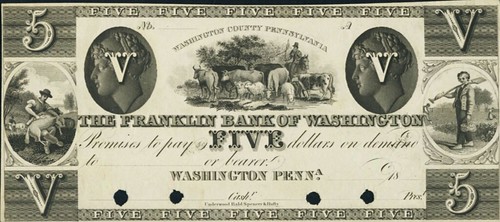
Washington, PA - Franklin Bank of Washington $5 18__ PA-685 G2, Hoober 426-1. Proof. PCGS Very Choice New 64PPQ.
A choice Underwood, Bald, Spencer & Hufty India paper proof from a rare bank. A drover's scene is at top center under the arced county name. Cameo-head counters are flanking and the title and denomination are below. Oval vignettes are between corner counters at the ends: at left, a man shearing a sheep and at right, a barefoot farm boy carrying a shovel and a lunch basket. Noted as "Hole Punch Cancelled" as made. A gorgeous impression.
To read the complete lot description, see:
Washington, PA - Franklin Bank of Washington $5 18__ PA-685 G2, Hoober 426-1. Proof.
(http://currency.ha.com/itm/obsoletes-by-state/pennsylvania/washington-pa-franklin-bank-of-washington-5-18-pa-685-g2-hoober-426-1-proof-pcgs-very-choice-new-64ppq/a/241618-87051.s?ic4=GalleryView-Thumbnail-071515)
On the Farmers Bank of Somerset & Worcester $5, the layout and style are quite different. This note shows a particularly delightful signed vignette of a seated man fishing while sheltered by an elaborately engraved tree. Sheep graze on the opposite bank below the farmhouse.
Snow Hill, MD - Farmers Bank of Somerset & Worcester $5
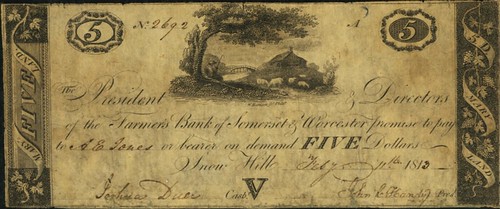
Snow Hill, MD - Farmers Bank of Somerset & Worcester $5 February 11, 1813 MD-295 G18 SENC, Shank 128.2.3. PCGS Very Fine 20 Apparent.
The bank was short-lived and the notes are very rare. This is another Shank Plate Note loaned from the Newman Collection for illustration in the book. William Harrison of Philadelphia engraved this enchanting $5 note. At top center, framed by the branches of a large tree, a seated man fishes as sheep graze on the opposite bank. Numerical counters are flanking at the top, and a "V" is seen at the base. A fascinating issued note of great importance.
To read the complete lot description, see:
Snow Hill, MD - Farmers Bank of Somerset & Worcester $5 February 11, 1813 MD-295
(http://currency.ha.com/itm/obsoletes-by-state/maryland/snow-hill-md-farmers-bank-of-somerset-and-worcester-5-february-11-1813-md-295-g18-senc-shank-12823-pcgs-very-fine-20-ap/a/241618-86738.s?ic4=GalleryView-Thumbnail-071515)
To view the downloadable auction catalog, please visit:
http://currency.ha.com/c/catalog-print.zx?saleNo=241618&ic5=CatalogHome-AucType-PrintableCatalog-071515
To read the earlier E-Sylum article, see:
SELECTIONS FROM HERITAGE NEWMAN INTERNET PART 1 SALE
(www.coinbooks.org/esylum_v19n12a22.html)

Archives International Auctions, Part XXXII
U.S., Chinese, Russian & Worldwide Banknotes,
Scripophily and Coins
April 11-13, 2016
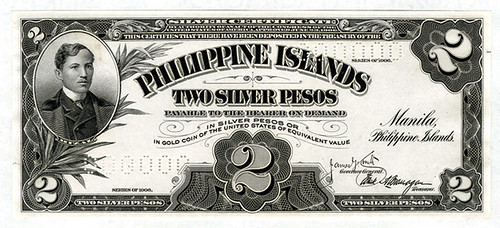
Click the links! Highlights include:
Lot 62: French Guiana. 5 New Francs 1961 Provincial Issue
Lot 85: Guadeloupe, 1 Noveau Franc on 100 Francs
Lot 104: Reserve Bank of India "Persian Gulf Note"
Lot 111: Government of Iraq 10 Dinars of King Faisal II
Lot 201: Philippine Islands Silver Certificate Unique Presentation Proof
Lot 255: Francis Spinner Letter, 1871.
Lot 479: Copper Printing Plate Engraved By William Kneass, Chief Engraver
Lot 499: U.S. Legal Tender Treasury Note, Unique Presentation Proof, $10, Series of 1890
Lot 1056: Lao 1948 Unlisted Color Trial Specimen Essay Banknote
Lot 1351: Vladikavkaz Railroad Company 1919 Interest Bearing Loan Note Rarity
Lot 2053: Bank of China, 1918 "Tsining / Shangtung" Issue Rarity
Lot 2258: Deutsch-Asiatische Bank, 1907 "Peking" Branch Rarity
Lot 2319: Peiyang Tientsin Bank, ND (1910) Tael Issue
Lot 2263: Netherlands Trading Society, 1909 Issued Banknote
View the Virtual Catalog
Download the Catalog in PDF format
ARCHIVES INTERNATIONAL AUCTIONS, LLC
1580 Lemoine Avenue, Suite #7
Fort Lee, NJ 07024
Phone: 201-944-4800
Email: info@archivesinternational.com
WWW.ARCHIVESINTERNATIONAL.COM
SELECTIONS FROM STACKS-BOWERS MARCH 2016 CURRENCY SLE
Lot 15028: Monticello, Arkansas. Corporation of Monticello. June 2, 1862. $3
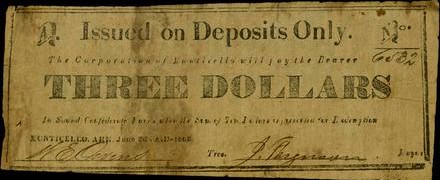
Monticello, Arkansas. Corporation of Monticello. June 2, 1862. $3. PMG Fine 12. Stains. (Rothert-495 UNL) No printer's imprint. Crude typeset format scrip note similar to other Southern scrip notes from this era. Plate letter A at top left, serial number at top right. Denomination spelled out in bold letters at center. "In Sound Confederate Funds when the Sum of Ten Dollars is presented for Redemption" below. Signed by W.E. Owens as Treasurer and J. Ferguson as Mayor at right. The Rothert Arkansas reference lists denominations of 50 Cents, $1 and $2 but no $3. Each listed note is given a R-7 rarity rating indicating 1 to 5 known. We have only seen a 50 Cent example offered prior to this note.
To view the complete lot description, see: https://auctions.stacksbowers.com/lots/view/3-2LPVX
Lot 15237: 1864 $20 Compound Interest Treasury Note
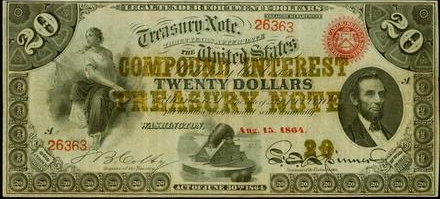
Fr. 191a. 1864 $20 Treasury Note. PCGS Very Fine 30 Apparent. Small Edge Splits; Minor Restorations.
This Compound Interest Treasury note is known by just 59 examples including this newly discovered piece according to Track and Price and this Very Fine offering is certainly above the average grade. Still bold bronzing at center states the series type and the note also offers strong overprinted details in the serial numbers and Type I treasury seal. Allegorical vignette of Victory at left; mortar, lower center; Abraham Lincoln, right. Red overprinted date of Aug 15, 1864.
To view the complete lot description, see: https://auctions.stacksbowers.com/lots/view/3-2LMNA
Lot 15432: 1969D $1 Federal Reserve Note Error
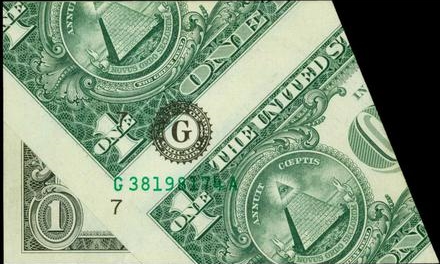
Fr. 1907-G. 1969D $1 Federal Reserve Note. Chicago. PCGS Choice About New 58 PPQ. Printed Fold Over; Cutting Error.
This highly dramatic error note received a correct first and second print being the back and face design respectively. The sheet was then folded prior to the overprinting process and remained that way through cutting and packaging.
To view the complete lot description, see: https://auctions.stacksbowers.com/lots/view/3-2LLUX
Lot 15596: Devol, Oklahoma. $5 1902 Plain Back. Fr. 606. The First NB. Charter #11535.
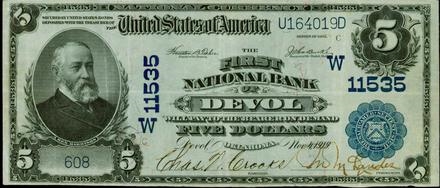
Devol, Oklahoma. $5 1902 Plain Back. Fr. 606. The First NB. Charter #11535.
This newly discovered $5 Devol Plain Back is now just the second example known on this excessively rare Cotton county bank. This sole issuing bank opened in 1919 and issued only $5 02' Plain Backs. $57,000 was issued and the bank closed just 6 years later. Devol was known for its brief oil boom in 1918 where the population at that time was roughly 1900. Today, the population is just over 150.
To view the complete lot description, see: https://auctions.stacksbowers.com/lots/view/3-2LOBA
Lot 30010: North Carolina. April 23, 1761 15 Shillings
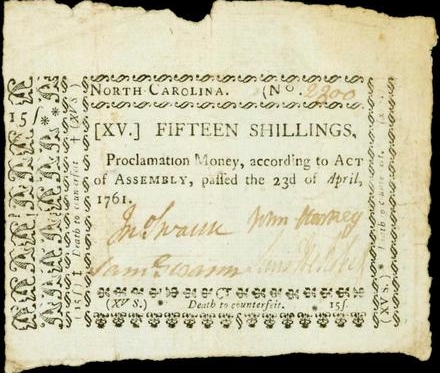
NC-123. North Carolina. April 23, 1761 15 Shillings. PCGS Very Fine 35.
Four signatures. A darkly printed 15 Shillings proclamation note that displays just moderate circulation and three large margins.
To view the complete lot description, see: https://auctions.stacksbowers.com/lots/view/3-2M39I
Lot 30025: Washington, District of Columbia. Mercantile Bank $1
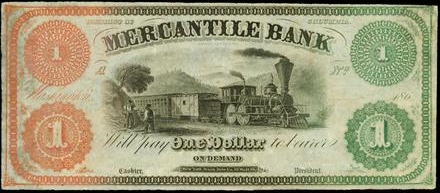
Washington, District of Columbia. Mercantile Bank. ND (186x) $1. About Uncirculated. Remainder.
(DC- 270 G2) New York Bank Note Co. A lovely remainder that used a dual-color tinting which features and orange/red at left and green at right.
To view the complete lot description, see: https://auctions.stacksbowers.com/lots/view/3-2M43E
Lot 30073: Plymouth, New Hampshire. Russell, Webster & Co. 5 Cents
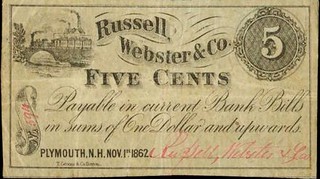
Plymouth, New Hampshire. Russell, Webster & Co. Nov. 1, 1862. 5 Cents. Very Fine.
Printed by T. Groom & Co. Boston. Train crossing bridge at top left. Hand numbered No. 594. An evenly circulated small format note payable "in current bank bills in sums of One Dollar and upwards."
To view the complete lot description, see: https://auctions.stacksbowers.com/lots/view/3-2M4JI
ALEXANDER REPORTS ON 1794 DOLLAR LONDON EXHIBIT
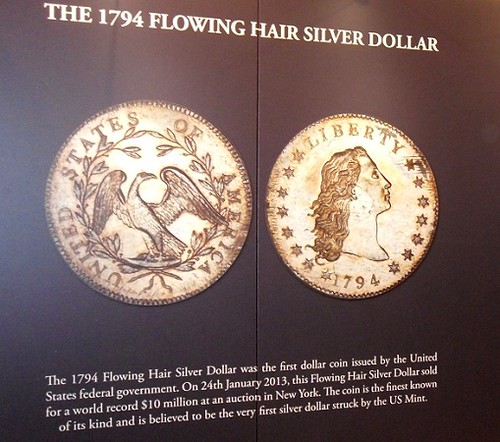
1794 United States Flowing Hair silver dollar that realized an astonishing 10 million dollars at auction in 2013 finally made its way to an awaiting public and media in London. The exceptional coin had been on a whirlwind tour of eight European cities that began on February 9 and concluded in London after visiting Prague, Estonia’s capital city of Tallinn, Oslo, and Dublin, among others.
A preview of this museum-quality piece was organized for media on Thursday, March 17, just before the dollar went on display for three days at the Royal Opera Arcade. The coin is thought to be the actual first dollar coin struck by the fledgling United States Mint in 1794; it has been graded SP-66 by PCGS and is now considered the world’s most valuable coin.
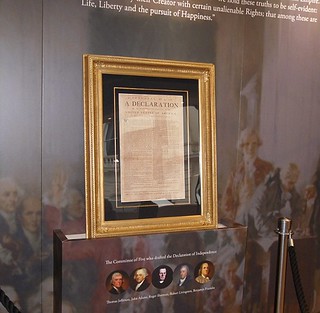
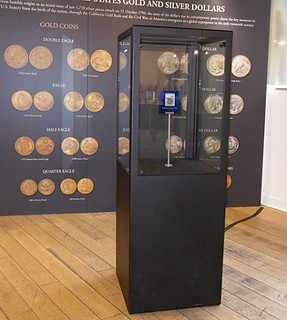
For the exhibition, the piece was encased in bullet-proof glass and given pride of place in the venue, just a stone’s throw from Trafalgar Square. Along with the Flowing Hair dollar, the display heralded a complete collection of American circulation silver dollars, with half dollars, quarter dollars, a comprehensive collection of Gold Double Eagles — including a high relief 1907 St. Gaudens — and one dollar gold coins.
For history buffs, an actual copy of the American Declaration of Independence was included in the exhibition, just to the left of the Flowing hair dollar. The copy is believed to be a locally re-printed newspaper version of the hallowed original, written by the man who would eventually become America’s third President, Thomas Jefferson.
The July 1776 Boston broadside copy on display was originally printed to announce and inform the local citizens of the decision by the continental congress to declare America’s independence from Great Britain, and has an estimated value of four million dollars.
The tour and display were sponsored by the London Mint Office, a subsidiary of Sammlerhuset Group B.V., whose head office is located in Almere, Netherlands. The tour concluded on Sunday, March 20. For additional information on this and other promotional tours organized by Sammlerhuset B.V. please visit their Web site.
To read the complete article, see:
London Hosts Exhibition of Rare 1794
Flowing Hair Silver Dollar (news.coinupdate.com/london-hosts-exhibition-of-rare-1794-united-states-dollar/)
2016 NATIONAL SILVER DOLLAR ROUNDTABLE VIDEOS
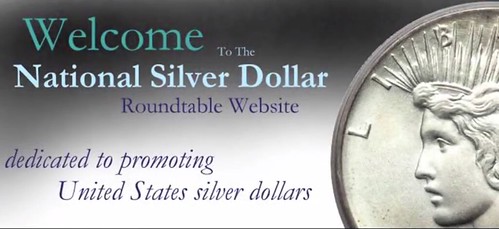
These are the videos of the 2016 NSDR Banquet held in Tampa. Plus a DVD of the entire affair will be available.
Please encourage readers to subscribe to CoinTelevision on YouTube to receive additional other videos, and click in the red SUBSCRIBE button: https://www.youtube.com/channel/UC52CjqpDZqMlCXJZGWBj-ug
NSDR Banquet & Awards Ceremony 2016
The National Silver Dollar Roundtable is the premiere organization dedicated to promoting and collecting silver dollars. Membership is
comprised of the leading dealers in silver dollars who are bound by a strict code of ethics regarding all their dealings with their
customers and each other. NDSR has a yearly banquet during which awards are given out to those that have best served the organization.
History of NSDR. VIDEO: 3:37.
https://youtu.be/qUoNOCH6N1A
State of the Silver Dollar Market. VIDEO: 3:32.
https://youtu.be/orDka6TBmtg
NSDR Presidential Awards. VIDEO: 2:24
https://youtu.be/8t5ElUf1Ip8
New NSDR Life Members. VIDEO: 3:41.
https://youtu.be/l4CBTztU-Ew
ICTA & Diane Piret Tribute. VIDEO: 9:06.
https://youtu.be/WL4c5zOwO1g
NSDR Woman of the Year Award. VIDEO: 5:34.
https://youtu.be/KI88SjC7Cvw
NSDR Man of the Year. VIDEO: 9:00
https://youtu.be/OUmybcbKww4
Lifetime Achievement Award. VIDEO:14:20.
https://youtu.be/NoPI7YU4EIw
NSDR Woman of the Year Award. VIDEO: 5:34.
https://youtu.be/KI88SjC7Cvw
For more information about the National Silver Dollar Roundtable, see:
www.nationalsilverdollarroundtable.org

SOME RECENT COIN DESIGNS: MARCH 27, 2016
2015 Andorra 2 Euro Coins
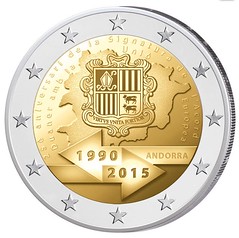
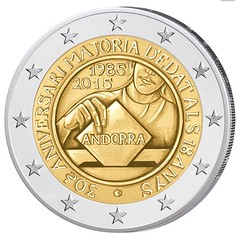
2016 Luxembourg 2.5 Euro on the Museum of Modern Art
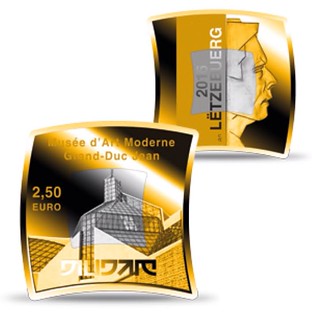
Formore information, see page 45:
www.bcl.lu/fr/Billets-et-pieces/produit_numismatique/catalogue_numismatique.pdf
2016 Poland 10 Zloty
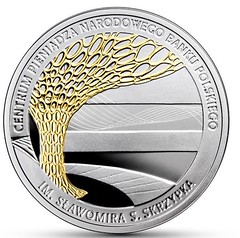
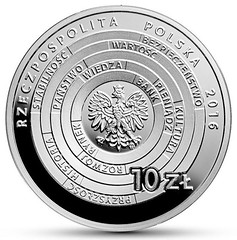
France Issues “The Teston” Gold and Silver Coins
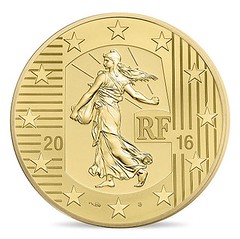
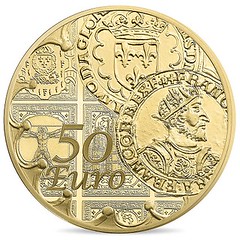
The Monnaie de Paris has released the next design in its Sower Historic Coins series, which recalls France’s numismatic heritage by highlighting some of the most significant coins in the nation’s history. The 2016 issues feature the teston, a sixteenth century issue that circulated during the reign of Francis 1. This year’s design is available on three gold Proof coins — with 10-euro, 50-euro, and 100-euro denominations — as well as on a 10-euro silver Proof issue.
The reverse design features likenesses of both the obverse and reverse of the original teston, along with an inscription indicating the denomination. The background includes images that represent the French Renaissance, including Leonardo da Vinci’s “Vitruvian Man” and Chambord Castle.
To read the complete article, see:
France Continues Sower
Series with “The Teston” Gold and Silver Coins
(http://world.mintnewsblog.com/2016/03/france-continues-sower-series-with-the-teston-gold-and-silver-coins/)
2016 Cook Islands Egyptian Labyrinth

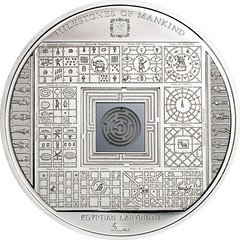
The obverse shows the Ian Rank-Broadley portrait of Elizabeth II of England, also her name, the title of the issuing nation as well as the nominal value.
The reverse depicts the Egyptian Labyrinth of Athanasius Kircher and features a playable micro- labyrinth inlay in the centre. Engraved are the inscriptions MILESTONES OF MANKIND, EGYPTIAN LABYRINTH, and the year of issue.
FIRST GAY COIN DESIGN?
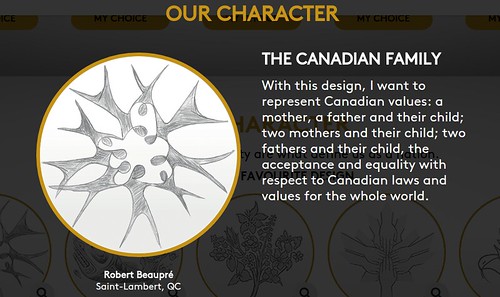
One of the designs that could appear on Canada’s new coins conceals a subtle pro-equality message.
The country is currently holding a contest to pick the designs for new coinage, with special five cent, ten cent, 25 cent, one dollar and two dollar coins all set to be issued in 2017 to mark the country’s 150th birthday.
Following a number of public submissions, the Canadian Mint has announced the final shortlist for each of five categories, from each of which a design will be chosen.
It won’t be revealed which category corresponds to which coin until after the winners are picked.
However, one of the shortlisted candidates in the ‘our Character’ category hides a subtle pro-gay message in what at first appears to be a random pattern.
If you look closely, the coin, which is intended to represent “our shared values and diversity as a nation”, features not random squiggles but a number of abstract stick figure families – representing same-sex parents and opposite-sex parents.
Robert Beaupré from Saint-Lambert, Québec, who submitted the design, wrote: “With this design, I want to represent Canadian values: a mother, a father and their child; two mothers and their child; two fathers and their child, the acceptance and equality with respect to Canadian laws and values for the whole world.”
The design has to face off against the four others in the category, however, to appear on the actual currency.
To read the complete article, see:
Canada's New Coins Have An Amazing
Pro-Gay Secret (www.pinknews.co.uk/2015/09/13/canadas-new-coins-have-an-amazing-pro-gay-secret/)
THE BOOK BAZARRE
HALF DOLLARS AND THE MACHTZIS HASHEKEL CUSTOM
THE CUSTOM
The Ramah (OC 694:11) mentions the custom of Zecher L’Machtzis HaShekel. The custom is on the day before Purim to give three coins to
Tzedakah in order to commemorate the giving of the half shekel that was given during the times of the Bais HaMikdash in the month of Adar.
The half shekel was donated to the treasury of the Bais HaMikdash once each year. The original half shekel weighed 9.6 grams (some say 8.5
grams). At the current rate as of March 21, 2016, the price of silver is $.51 per gram. The value thus would have been $4.90 per person. In
the times of the Bais HaMikdash, only one coin was given. Now we give three coins. We do so because the word “Trumah” appears three times
in the Torah section where the original obligation is discussed (Shmos 30:11-16).
THE DENOMINATION OF THE COUNTRY
The minhag is to give 3 half coins of the denomination of that country. Here in America we would give three half dollars. In England it
would be three half pound coins, and in Europe it would be three fifty cent Euro coins. Ideally, one should try to avoid giving a whole
coin and a fifty cent coin. In other words, ideally, no Susan B. and Kennedy half dollar. It should be noted that the custom of the Vilna
Gaon, as cited in the Maaseh Rav (233), was to only give one half coin and not three.
IDEAL METHOD
The Kaf HaChaim (694:2) writes that the ideal method is to use a coin with the word, “half” on it. The American half-dollar has this. The
half Euro in Europe does not nor does the 50 shilling coin in England. The Minchas Elazar (Vol. I #30), however, disagrees with this
position and states that there is no reuirement of the word “half” to be printed on it. The Piskei Teshuvah (page 574) writes citing the
Sefer Midos v’Shiurei Torah (35:1) that ideally we should have the same amount of silver as the original coins that were used in the times
of the Beis HaMikdash. To fulfill this, let’s get a bit of a background.
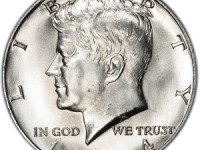 The original Kennedy Half Dollar was created as a memorial to the President John F. Kennedy who was assassinated by Lee Harvey Oswald on
November 22, 1963 in Dallas, Texas. It is still being minted to this day with some differences.
The original Kennedy Half Dollar was created as a memorial to the President John F. Kennedy who was assassinated by Lee Harvey Oswald on
November 22, 1963 in Dallas, Texas. It is still being minted to this day with some differences.
The original 1964 version was minted in 90% silver. The next version minted between 1965-1969 were only 40% silver. The 1970 set can only be found in silver proof sets that were never released into actual circulation. The coins from 1971 and up are not silver at all.
The current silver melt value for the 1964 coin (90% Silver) is $5.71 and fits the ideal criterion it is 11.75 grams well above our 9.6 gram criterion. The current silver melt value for the 1965-1970 coins (40% Silver) is $2.34 or 5 grams – not quite enough.
The second best way would be to use the 1965-1970 coins and make up the difference with other money to bring one up to the $4.90 amount. These coins, at least, are silver. The third best way would be to use the 1971 coins and make up the $4.90 difference.
SCOTCH TAPING THE THREE
The prevalent custom is to scotch tape together 3 half dollar coins and leave them in the Pushkah so that each person can purchase those
coins and fulfill the minhag.
If the shul does not have such a scotch taped three-pack, then a possible workaround is that he should give three whole coins and have in mind that half of each should be for commemorating Machtzis haShekel and the extra half of each should be regular Tzedakah.
To read the complete article, see:
Machtzis HaShekel: 1964 Kennedy Half Dollars – The Ideal Method - See more at:
http://www.theyeshivaworld.com/news/headlines-breaking-stories/398246/machtzis-hashekel-1964-kennedy-half-dollars---the-ideal-method.html#sthash.cC6bWiaS.dpuf
(www.theyeshivaworld.com/news/headlines-breaking-stories/398246/machtzis-hashekel-1964-kennedy-half-dollars---the-ideal-method.html)

REPORT PREDICTS END OF CASH AS EARLY AS 2030
 By the year 2030, cash will be dead. And mobile payments are what will kill it.
By the year 2030, cash will be dead. And mobile payments are what will kill it.
That's one of the key findings of the latest cybersecurity report by IEEE, the Institute of Electrical and Electronics Engineers. The report, simply titled The Future of Cybersecurity, was released on Wednesday and speaks to security issues with mobile payments, as well as the cloud, email, and personal security.
To form the basis of this report, IEEE surveyed nearly 2000 technology enthusiasts to get their thoughts on the state of cybersecurity and where it is headed. For starters, they took a look at the security of mobile payments.
According to the report, 70% of the people who responded believed that, by the year 2030, "mobile payments will be secure enough to overtake the use of cash and credit cards."
Toward the end of 2015, while more than half of Americans knew that mobile payments systems existed, very few actually used them. However, it was also predicted that the use of the technology would triple in the year 2016.
However, right now there are still a plethora of concerns being voiced by potential users of the technology... If these concerns can be addressed, though, it could lead to an explosion of mobile payment system engagement.
To read the complete article, see:
2030: The year mobile
payments kill cash, according to security report
(www.techrepublic.com/article/2030-the-year-mobile-payments-kill-cash-according-to-security-report/)
VENEZUELA ORDERS BANKNOTES BY THE PLANELOAD
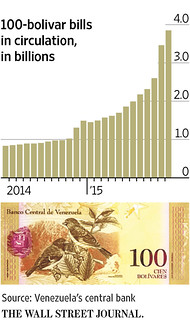 Millions of pounds of provisions, stuffed into three-dozen 747 cargo planes, arrived here from countries around the world in recent months
to service Venezuela’s crippled economy.
Millions of pounds of provisions, stuffed into three-dozen 747 cargo planes, arrived here from countries around the world in recent months
to service Venezuela’s crippled economy.
But instead of food and medicine, the planes carried another resource that often runs scarce here: bills of Venezuela’s currency, the bolivar.
The shipments were part of the import of at least five billion bank notes that President Nicolás Maduro’s administration authorized over the latter half of 2015 as the government boosts the supply of the country’s increasingly worthless currency, according to seven people familiar with the deals.
And the Venezuelan government isn’t finished. In December, the central bank began secret negotiations to order 10 billion more bills, five of these people said, which would effectively double the amount of cash in circulation. That order alone is well above the eight billion notes the U.S. Federal Reserve and the European Central Bank each print annually—dollars and euros that unlike bolivars are used world-wide.
Four spokesmen from Venezuela’s central bank didn’t respond to calls and emails seeking comment.
Economists say the purchases could exacerbate Venezuela’s economic meltdown: injecting large numbers of freshly printed notes is likely to stoke inflation, which the International Monetary Fund estimates will this year hit 720%, the world’s highest rate.
To read the complete article, see:
Inflation-Racked Venezuela
Orders Bank Notes by the Planeload (www.wsj.com/articles/inflation-wrought-venezuela-orders-bank-notes-by-the-planeload-1454538101)
THE BOOK BAZARRE
COIN COLLECTING CONUNDRUM SUGGESTIONS
1. When you started out collecting your uncle gave you a George V crown he had when he was a boy. Before you got married, your future mother in law gave you a George III gold guinea and she said she wanted it to stay in the family. Neither fit in with your collection (the coins, not your mother in law).
Chip Howell writes:
You give the crown and the guinea to your WIFE, so that both stay in the family;
2. One day you see some coins in a charity shop window. It is specimen set 1937, crown to Maundy penny for £18.00. You are later offered £200.00.
Chip Howell writes:
IF you take the offer, you give half of your profit [i.e., (£200 - £18)/2 = £91] to the shop, but if you choose to KEEP the set, you give the shop an additional £82 [i.e., £200/2 - £18], thereby sharing the wealth & writing off the additional on your taxes as a charitable donation;
3. You go to your coin dealer and see a Charles I Crown. He says it is a fake but you think it is real. He wants £10.00 for it.
Chip Howell writes:
Purchase the crown for £10 because you think it's real & he has had a chance to examine it to his satisfaction--or let it go & move on, because your collection is already too big;
Chip Howell adds
I *assumed* that was an essential condition of the exercise (e.g., the little woman will kill you if you bring anything else home.) And there IS a finite amount of space, so ultimately it WILL be a consideration.
4. You look in his junk box and see a rare USA token from colonial times. The dealer says all are £1 each but when you show him this coin he wants to charge you £10.00.
Chip Howell writes:
Because the dealer appears to be unethical (after all, who put that token in the "£1 each" box?), you walk away & never do business with him again, letting him know exactly why & that you're going to give him a terrible review on "Yelp."
To read the earlier E-Sylum article, see:
COIN COLLECTING CONUNDRUMS (www.coinbooks.org/esylum_v19n12a36.html)

HIDDEN BENEFIT OF A LARGE LIBRARY
Dick Johnson writes:
The Reader’s Digest reports this month that if you have more than 100 books in your home your children will read “one and a half grade levels above those with fewer books in the house.” Worked for my kids. It also reported that if you make your bed in the mornings you like your job.
A 2014 study found that the number of books in your home is by far the most important predictor of your child’s grade-level reading performance—more than your income or education level. Students whose homes had at least 100 books read one and a half grade levels above those with fewer books in the house.
To read the complete article, see:
13 Very Personal Details Your House Reveals About You
(www.rd.com/home/improvement/what-house-says-about-you/)
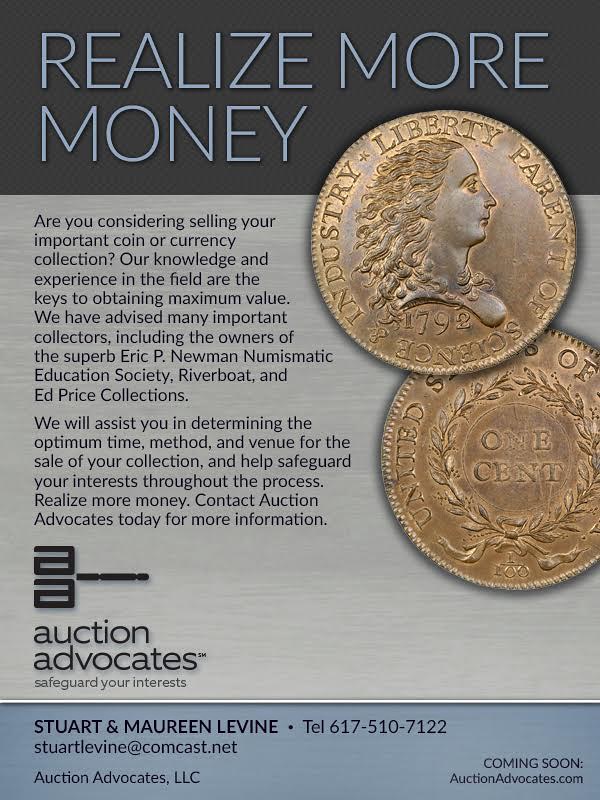
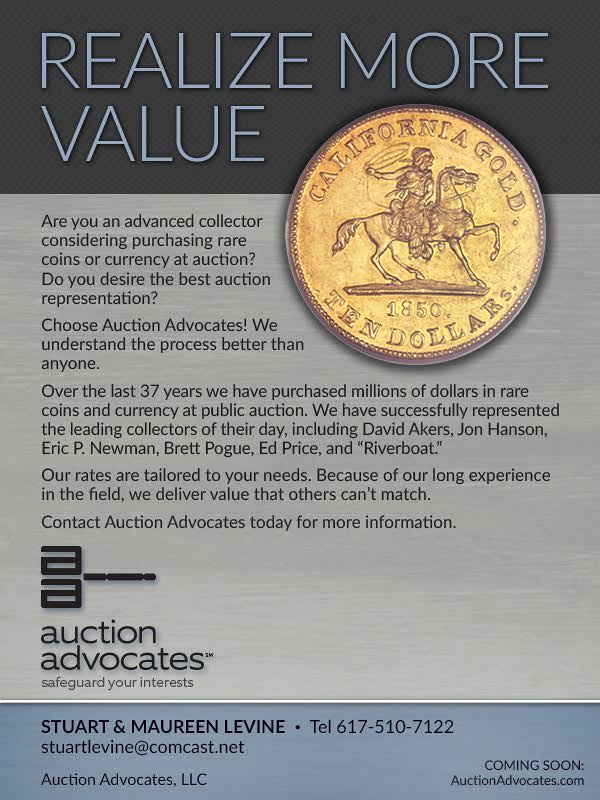
FEATURED WEB SITE: ART NOUVEAU AND ART DECO MEDALS
This week's Featured Web Site is "Art Nouveau and Art Deco Medals" by Nicolas Maier. It's loaded with great illustrations of beautiful art medals from round the world. Medals are arranged by artist and themes, including: International Exhibitions and World Fairs, Marianne - the National Symbol of France , and Medicina in Nummis.Medals as a political medium for communicating information were generally subject to strict guidelines regarding their content and design, the artistic aspect was almost totally neglected.
Medallists such as Jules-Clément Chaplain, Oscar Roty and Alexandre Charpentier renewed medallic art in France during the nineteenth century, leading to a revival that attracted worldwide interest.
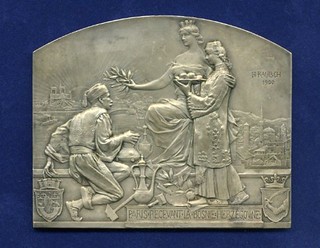
www.finemedals.com

